Daniel Anglés-Alcázar, astronomy, University of Connecticut – Multi-Scale Physics of Supermassive Black Hole Growth and Feedback in Galaxies and Fundamental Implications in Cosmology
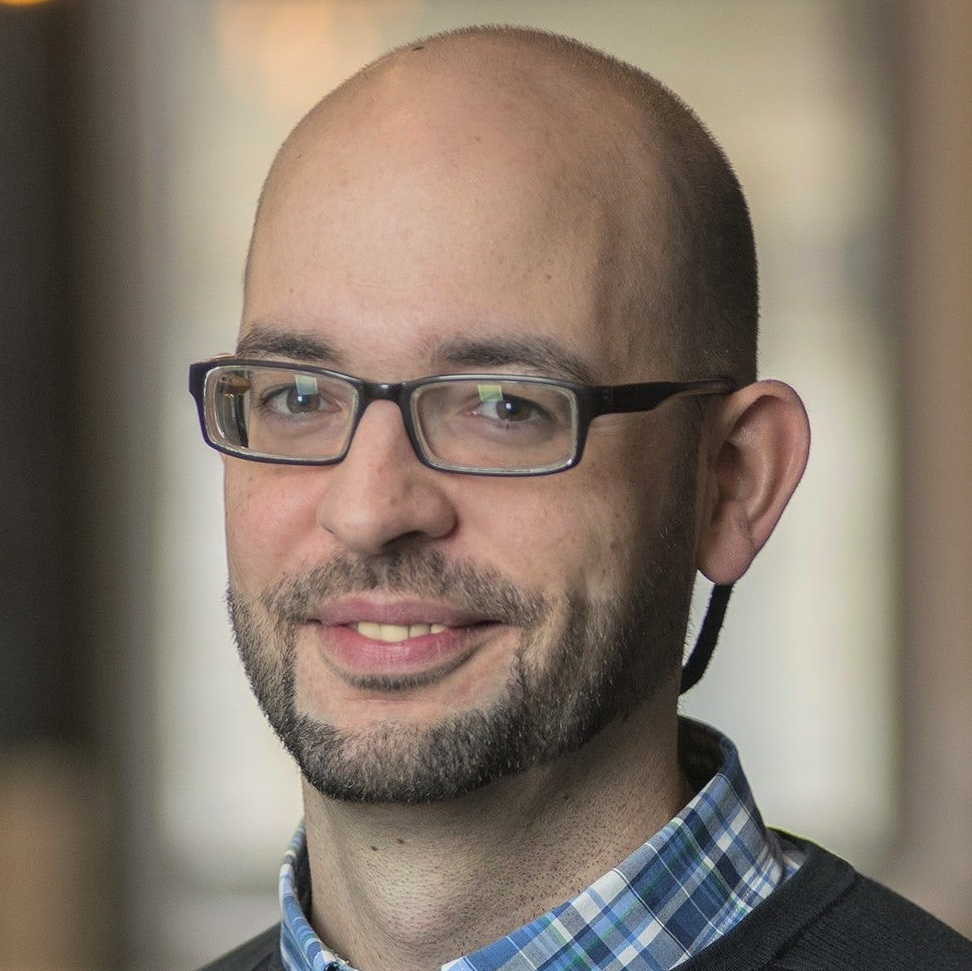 “Growing supermassive black holes at the centers of galaxies are responsible for a variety of phenomena, from luminous quasars that outshine the entire galaxy to large-scale outflows and relativistic jets that can profoundly affect the evolution of galaxies and the properties and distribution of matter in the universe. However, significant uncertainties in the multi-scale physics of supermassive black holes limit our understanding of galaxy evolution as well as the amount of information that can be extracted from cosmological surveys, which could otherwise provide a more detailed understanding of the fundamental properties of the universe. With my research group and collaborators, we will develop novel computational approaches that will push the frontiers of theoretical models in complementary new directions, including a new class of cosmological hyper-refinement simulations that for the first time explicitly resolve supermassive black hole accretion and impact of feedback while including a realistic cosmological galaxy formation context, as well as a suite of thousands of cosmological large-volume simulations designed to train machine learning algorithms that can separate the intrinsic signatures of fundamental cosmological parameters from those of uncertain supermassive black hole physics. This award will also support a multi-component educational program aimed at increasing the retention and success of students from underrepresented groups in the Physical Sciences, including a redesign of graduate and undergraduate courses in Computational Physics to incorporate more effective active learning approaches that can help reduce achievement gaps and offer disproportionate benefits for minority students, and an undergraduate program that will provide mentoring and financial support for students from underrepresented groups in STEM to participate in semester-long data visualization projects using Python programming tools.”
“Growing supermassive black holes at the centers of galaxies are responsible for a variety of phenomena, from luminous quasars that outshine the entire galaxy to large-scale outflows and relativistic jets that can profoundly affect the evolution of galaxies and the properties and distribution of matter in the universe. However, significant uncertainties in the multi-scale physics of supermassive black holes limit our understanding of galaxy evolution as well as the amount of information that can be extracted from cosmological surveys, which could otherwise provide a more detailed understanding of the fundamental properties of the universe. With my research group and collaborators, we will develop novel computational approaches that will push the frontiers of theoretical models in complementary new directions, including a new class of cosmological hyper-refinement simulations that for the first time explicitly resolve supermassive black hole accretion and impact of feedback while including a realistic cosmological galaxy formation context, as well as a suite of thousands of cosmological large-volume simulations designed to train machine learning algorithms that can separate the intrinsic signatures of fundamental cosmological parameters from those of uncertain supermassive black hole physics. This award will also support a multi-component educational program aimed at increasing the retention and success of students from underrepresented groups in the Physical Sciences, including a redesign of graduate and undergraduate courses in Computational Physics to incorporate more effective active learning approaches that can help reduce achievement gaps and offer disproportionate benefits for minority students, and an undergraduate program that will provide mentoring and financial support for students from underrepresented groups in STEM to participate in semester-long data visualization projects using Python programming tools.”
Sarah Ballard, astronomy, University of Florida – A Window into Day and Night: Constraining Nodal Precession of Temperate Planets Around Small Stars
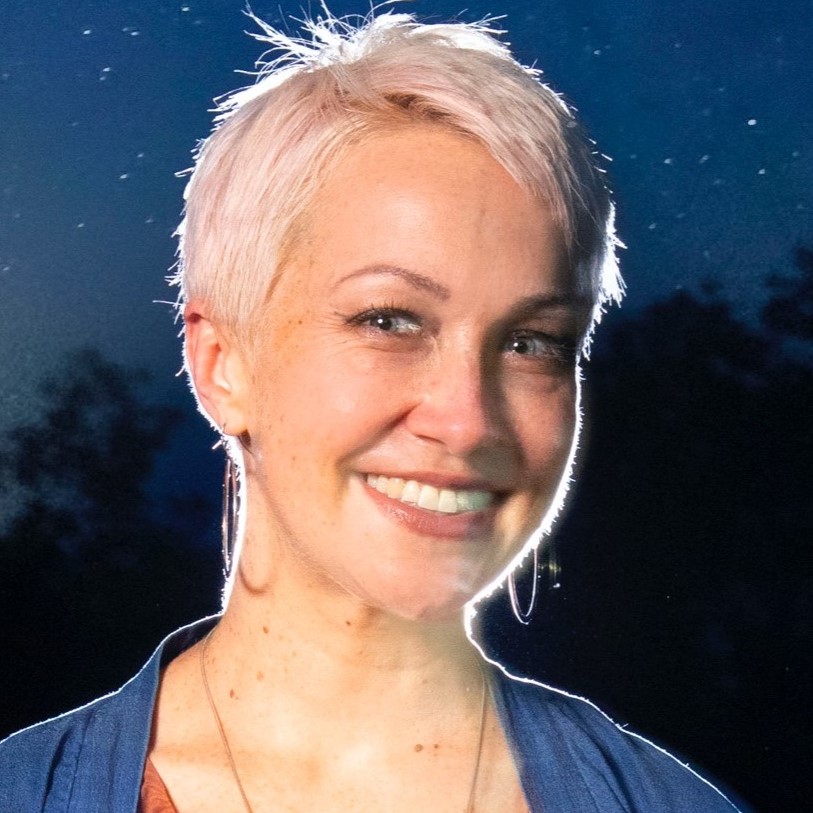 “I am interested in the day and night cycles of the Milky Way’s most common planets: they orbit stars half the mass of the Sun and smaller. These stars present a very different blueprint in key ways when compared to the conditions that nourished evolution of life on Earth, including the role played by tides. The educational component of my Cottrell award is the establishment of a summer exchange program in exoplanets for undergraduates to help mitigate the pipeline leak from the bachelor’s degree in astronomy to Ph.D. study.”
“I am interested in the day and night cycles of the Milky Way’s most common planets: they orbit stars half the mass of the Sun and smaller. These stars present a very different blueprint in key ways when compared to the conditions that nourished evolution of life on Earth, including the role played by tides. The educational component of my Cottrell award is the establishment of a summer exchange program in exoplanets for undergraduates to help mitigate the pipeline leak from the bachelor’s degree in astronomy to Ph.D. study.”
Cacey Bester, physics, Swarthmore College – Creep Across Scales: The Role of Disturbances on Creep in Disordered Media
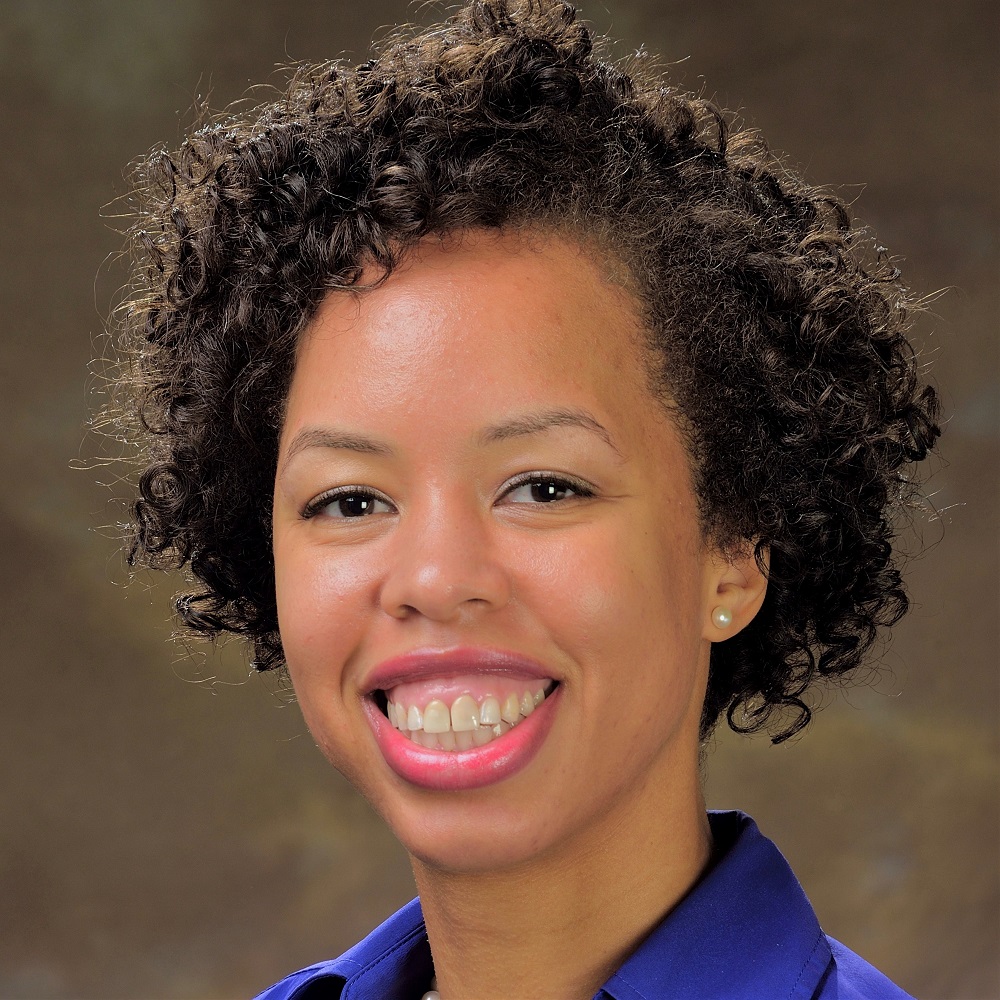 “Many seemingly solid materials around us exhibit flow. Sometimes this is apparent, such as flowing grains from an hourglass or landslides. Alternatively, the timescale of the flow can be very long, and flow is less apparent, as in the example of slowly evolving sloped hillsides. This leads one to question the mechanism of such flow. Creep is slow flow and deformation in a granular material due to applied stress and the disordered nature of its grain-scale interactions. Creep in granular media shares striking similarities with the behavior of thermal systems, like glasses, due to their common feature of disorder across their different scales. For this project, I will use photoelasticity, an effective experimental tool of granular systems, to probe the mechanisms of creep of disordered materials near yield. This work will address signatures of failure in disordered solids, the role of mechanical noise, and the connection to thermal and athermal systems at scales up to geological phenomena. With the goal of making physics and astronomy more equitable and inclusive, I will design a coherent set of instructional approaches for our undergraduate program to fit the identities and preparation levels that students bring to our classrooms. This wide-reaching project will foster a sense of belonging, physics identity, and academic citizenship through coordinated practices across our curriculum and department activities. The result would be a department with transparent priorities of inclusive physics learning, in which all students are supported, feel that they belong, and are in the best position to be successful.”
“Many seemingly solid materials around us exhibit flow. Sometimes this is apparent, such as flowing grains from an hourglass or landslides. Alternatively, the timescale of the flow can be very long, and flow is less apparent, as in the example of slowly evolving sloped hillsides. This leads one to question the mechanism of such flow. Creep is slow flow and deformation in a granular material due to applied stress and the disordered nature of its grain-scale interactions. Creep in granular media shares striking similarities with the behavior of thermal systems, like glasses, due to their common feature of disorder across their different scales. For this project, I will use photoelasticity, an effective experimental tool of granular systems, to probe the mechanisms of creep of disordered materials near yield. This work will address signatures of failure in disordered solids, the role of mechanical noise, and the connection to thermal and athermal systems at scales up to geological phenomena. With the goal of making physics and astronomy more equitable and inclusive, I will design a coherent set of instructional approaches for our undergraduate program to fit the identities and preparation levels that students bring to our classrooms. This wide-reaching project will foster a sense of belonging, physics identity, and academic citizenship through coordinated practices across our curriculum and department activities. The result would be a department with transparent priorities of inclusive physics learning, in which all students are supported, feel that they belong, and are in the best position to be successful.”
Ambika Bhagi-Damodaran, chemistry, University of Minnesota Twin Cities – Reprogramming Hypoxia Signaling in Laboratory and Inorganic Chemistry Education in Classrooms
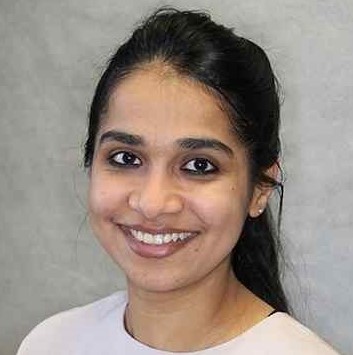 “Hypoxia is non-physiological levels of oxygen tension and is a common phenomenon in the majority of malignant tumors. The Bhagi-Damodaran lab will use their expertise in biological and inorganic chemistry to understand how protein sensors recognize and signal varied levels of hypoxia in cellular environments. At the same time, we will develop computationally guided approaches to modulate and reprogram hypoxia signaling pathways in cells. These studies will not only provide fundamental insights into structure, function, and reaction mechanisms of iron-based hypoxia protein sensors but also answer long-standing questions in cellular signaling and cancer biology. My educational efforts focus on revamping an inorganic chemistry laboratory course and make it more suited with the professional aspirations of University of Minnesota undergrads. Toward this goal, I will collaborate with education experts in academia and industry, and work toward reprogramming the content, pedagogical methodologies, and lab-report writing style of this course.”
“Hypoxia is non-physiological levels of oxygen tension and is a common phenomenon in the majority of malignant tumors. The Bhagi-Damodaran lab will use their expertise in biological and inorganic chemistry to understand how protein sensors recognize and signal varied levels of hypoxia in cellular environments. At the same time, we will develop computationally guided approaches to modulate and reprogram hypoxia signaling pathways in cells. These studies will not only provide fundamental insights into structure, function, and reaction mechanisms of iron-based hypoxia protein sensors but also answer long-standing questions in cellular signaling and cancer biology. My educational efforts focus on revamping an inorganic chemistry laboratory course and make it more suited with the professional aspirations of University of Minnesota undergrads. Toward this goal, I will collaborate with education experts in academia and industry, and work toward reprogramming the content, pedagogical methodologies, and lab-report writing style of this course.”
Matthew Caplan, physics, Illinois State University – Impacts of Central Primordial Black Holes on Stellar Evolution
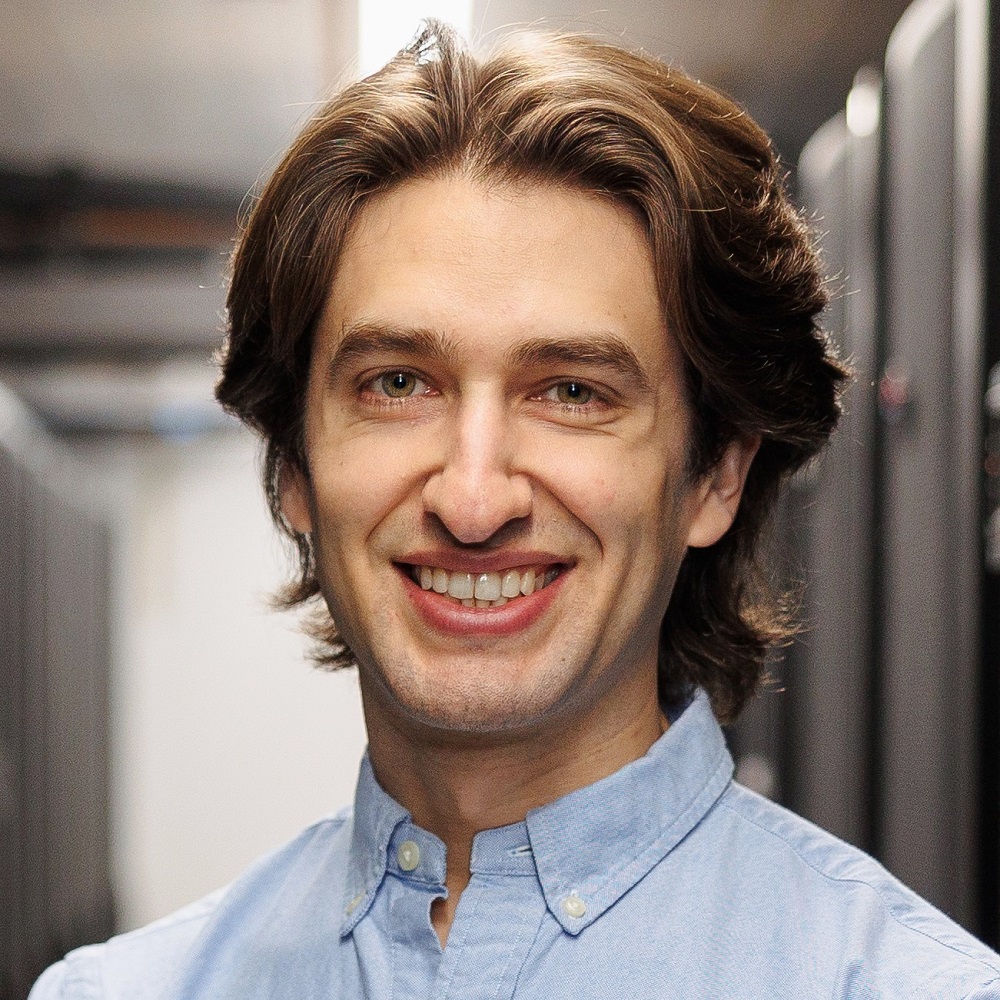 “More than 80% of the matter in the universe is completely invisible and is only known to us through its gravitational pull on galaxies and the large-scale structure of the cosmos. This 'dark matter' is one of the greatest mysteries in physics and dozens of new hypothetical particles have been proposed to explain it. My research considers a different possibility – that dark matter is a familiar kind of matter, specifically black holes, that may have been produced in enormous numbers in the first seconds of the universe. These 'primordial' black holes could come in any size, with some as small as atoms but as massive as asteroids, and may even be present in the solar system. Such black holes may be colliding with bodies in the solar system, like planets and the moon, producing novel craters that could be searched for. In some rare instances, one may even be captured and sink to the center of a star where it would slowly consume it from the inside over billions of years. My research will explore the impact of low-mass central black holes on the evolution of stars to determine whether there are any in the center of any nearby stars or in the center of our sun. Beyond my nuclear astrophysics research, I intend to educate both students and the public about the dangers posed by nuclear weapons. To do this, I will create a new interdisciplinary course on nuclear weapons and nuclear war and train students to communicate these dangers by creating mass media.”
“More than 80% of the matter in the universe is completely invisible and is only known to us through its gravitational pull on galaxies and the large-scale structure of the cosmos. This 'dark matter' is one of the greatest mysteries in physics and dozens of new hypothetical particles have been proposed to explain it. My research considers a different possibility – that dark matter is a familiar kind of matter, specifically black holes, that may have been produced in enormous numbers in the first seconds of the universe. These 'primordial' black holes could come in any size, with some as small as atoms but as massive as asteroids, and may even be present in the solar system. Such black holes may be colliding with bodies in the solar system, like planets and the moon, producing novel craters that could be searched for. In some rare instances, one may even be captured and sink to the center of a star where it would slowly consume it from the inside over billions of years. My research will explore the impact of low-mass central black holes on the evolution of stars to determine whether there are any in the center of any nearby stars or in the center of our sun. Beyond my nuclear astrophysics research, I intend to educate both students and the public about the dangers posed by nuclear weapons. To do this, I will create a new interdisciplinary course on nuclear weapons and nuclear war and train students to communicate these dangers by creating mass media.”
Javier Duarte, physics, University of California, San Diego – Building a Better Foundation: Teaching Physicists and Machines How to Learn from Data
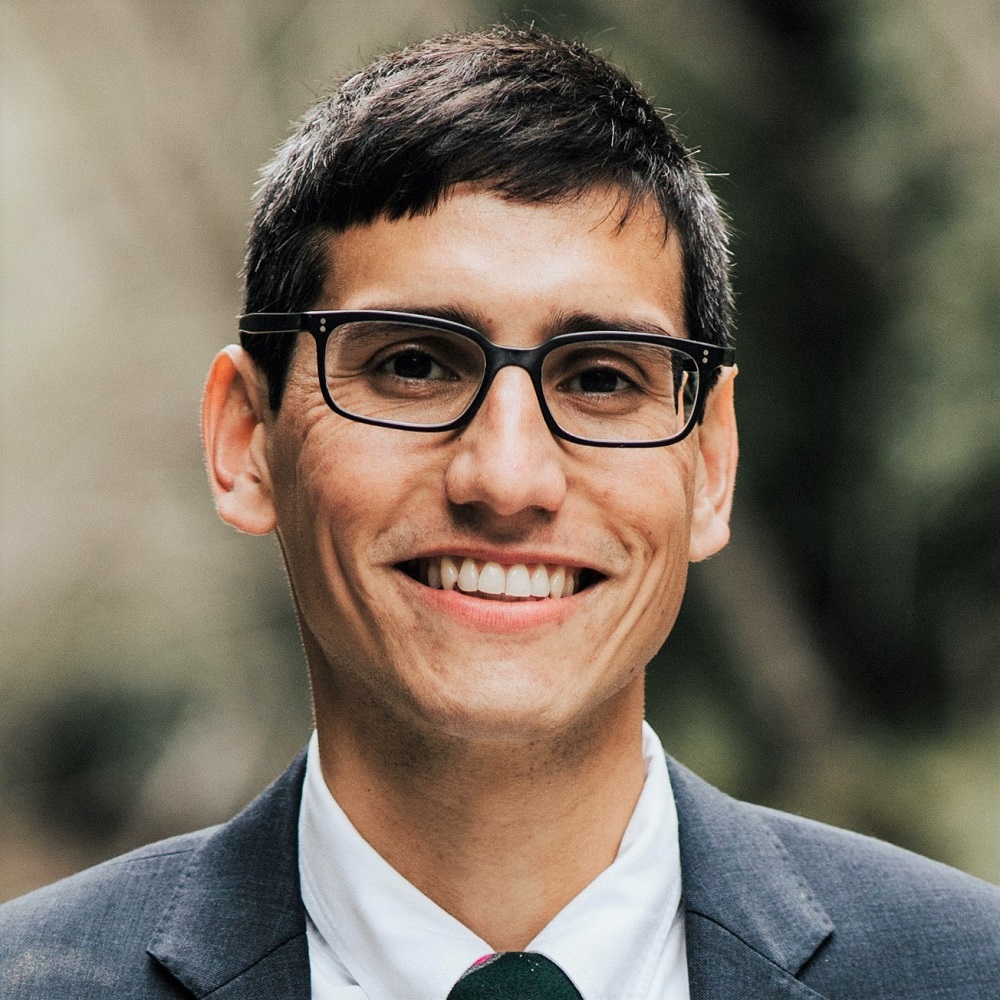 “As part of the CMS experiment at the CERN Large Hadron Collider, I explore the basic building blocks of matter by smashing together protons and analyzing the particles that emerge, such as the Higgs boson. Measuring the interactions of the Higgs boson can confirm our theoretical understanding, and any deviations may point to new physical laws. I plan to develop and study artificial intelligence models that learn important characteristics and relationships from unlabeled, real data (self-supervised learning) in the hopes of using these models to measure Higgs boson interactions and discover new physical laws. I also plan to teach the foundational principles of data science, the study of extracting value from data, and machine learning, which uses data to automatically construct programs for particular tasks, to physics students so they can apply these methods in their labs. In this new course, I will emphasize authentic collaboration among students and create an inclusive learning environment, especially for underrepresented groups in physics.”
“As part of the CMS experiment at the CERN Large Hadron Collider, I explore the basic building blocks of matter by smashing together protons and analyzing the particles that emerge, such as the Higgs boson. Measuring the interactions of the Higgs boson can confirm our theoretical understanding, and any deviations may point to new physical laws. I plan to develop and study artificial intelligence models that learn important characteristics and relationships from unlabeled, real data (self-supervised learning) in the hopes of using these models to measure Higgs boson interactions and discover new physical laws. I also plan to teach the foundational principles of data science, the study of extracting value from data, and machine learning, which uses data to automatically construct programs for particular tasks, to physics students so they can apply these methods in their labs. In this new course, I will emphasize authentic collaboration among students and create an inclusive learning environment, especially for underrepresented groups in physics.”
Christopher Durr, chemistry, Amherst College – Exploring the Synthesis and Mechanism of Single-Site and Cationic Group V Catalysts for the Production of Biodegradable Polymers
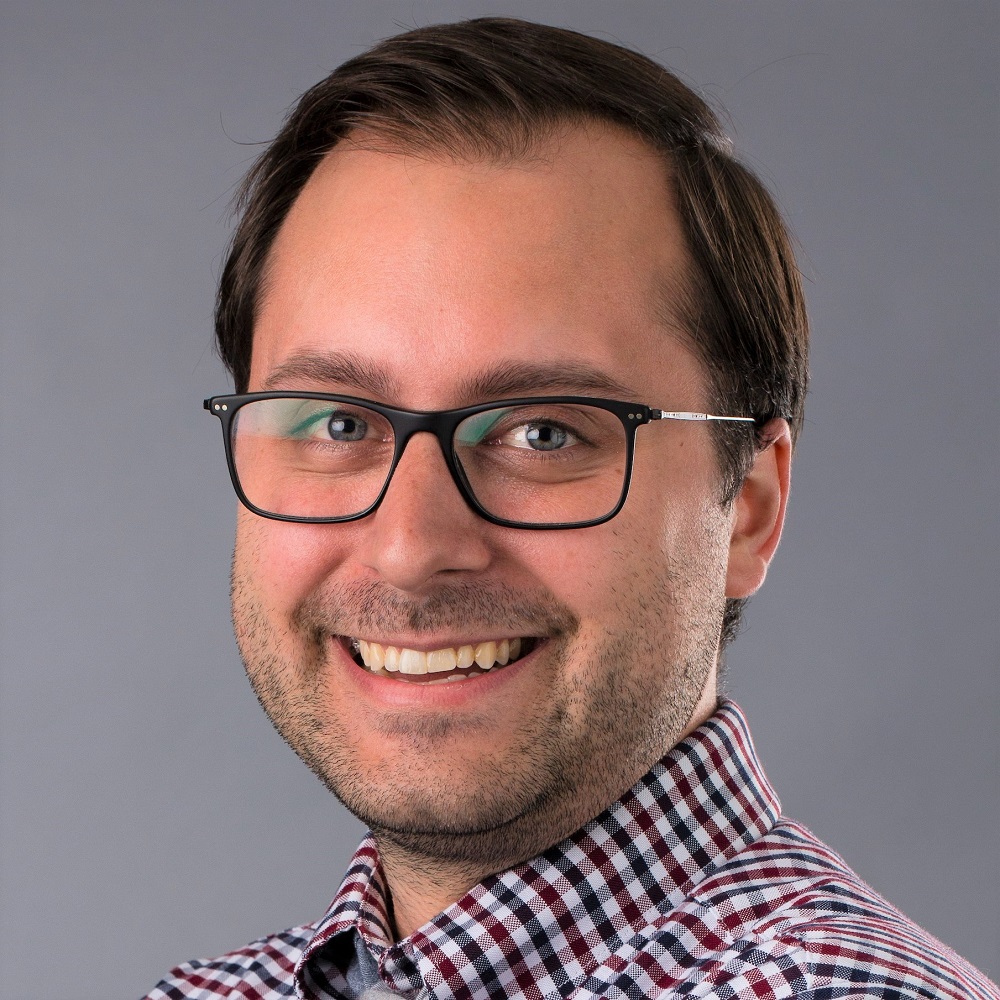 "Biodegradable polymers find applications in consumer materials that are critical for curbing the plastic waste problem and in various biomedical technology, where they assist in delivering drugs and regenerating tissue. My proposed research looks to design new catalysts capable of producing these materials. By controlling how they are made through catalysis, I aim to make them more efficiently and at a lower cost while also opening the door to new grades of degradable polymers in the future. My team of undergraduate researchers and I will do this by exploring a region of the periodic table that has previously been overlooked in the field. My education proposal seeks to show students both the breadth and depth of research in his field of inorganic chemistry by crafting a new course curriculum that allows them to explore current applications in the laboratory. The class will take on short, student-driven research projects throughout the year in catalyst design, materials chemistry, and polymer science to build their technical skills. In parallel, students will learn critical professional skills, from science communication to proposal writing, that will prepare them for future careers in the sciences."
"Biodegradable polymers find applications in consumer materials that are critical for curbing the plastic waste problem and in various biomedical technology, where they assist in delivering drugs and regenerating tissue. My proposed research looks to design new catalysts capable of producing these materials. By controlling how they are made through catalysis, I aim to make them more efficiently and at a lower cost while also opening the door to new grades of degradable polymers in the future. My team of undergraduate researchers and I will do this by exploring a region of the periodic table that has previously been overlooked in the field. My education proposal seeks to show students both the breadth and depth of research in his field of inorganic chemistry by crafting a new course curriculum that allows them to explore current applications in the laboratory. The class will take on short, student-driven research projects throughout the year in catalyst design, materials chemistry, and polymer science to build their technical skills. In parallel, students will learn critical professional skills, from science communication to proposal writing, that will prepare them for future careers in the sciences."
Megan Fieser, chemistry, University of Southern California – Controlling the Product Selectivity for the Catalytic Dechlorination of Poly (Vinyl Chloride)
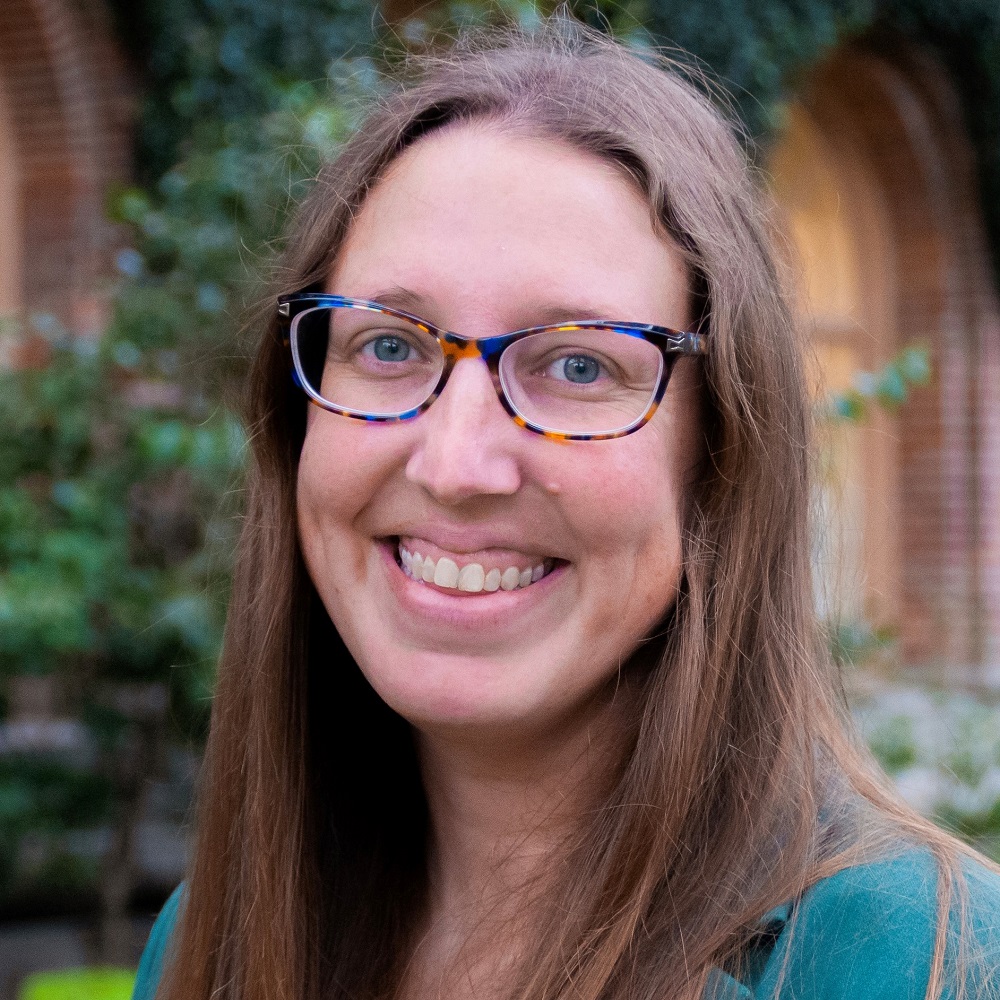 “Polyvinyl chloride is the world’s third-most produced polymer, with numerous applications ranging from pipes used in construction to vital and disposable medical items such as blood bags. However, both the chemical structure of PVC and the many additives required to modify the polymer properties prevent common recycling strategies and contribute to enormous environmental complications upon disposal of PVC items. To help address this critical problem, the Fieser group will develop new chemical methods to repurpose PVC into useful chemicals and polymers, without the generation of harmful chlorinated byproducts. Emphasis will be placed on designing catalysts and optimizing reaction conditions to control the selective removal of chlorine atoms from the polymer backbone to form desired polymer products, as well as on the stability of these newly developed methods to withstand the additives that are present in commercial products. My educational plan aligns with our research goals, in which my colleagues and I will establish a ‘plastics circularity’ minor on campus, combining chemistry, engineering, environmental studies and business courses to provide a broad perspective on skills needed to help address polymer pollution. Included in this minor, I will develop a new lecture and laboratory course which will introduce undergraduate students to the properties of synthetic polymers, highlight challenges in polymer circularity, and demonstrate career options to address plastic pollution. In addition to teaching USC students about this topic, we will also host a weeklong summer outreach program that will introduce community college students to career opportunities in polymer science.”
“Polyvinyl chloride is the world’s third-most produced polymer, with numerous applications ranging from pipes used in construction to vital and disposable medical items such as blood bags. However, both the chemical structure of PVC and the many additives required to modify the polymer properties prevent common recycling strategies and contribute to enormous environmental complications upon disposal of PVC items. To help address this critical problem, the Fieser group will develop new chemical methods to repurpose PVC into useful chemicals and polymers, without the generation of harmful chlorinated byproducts. Emphasis will be placed on designing catalysts and optimizing reaction conditions to control the selective removal of chlorine atoms from the polymer backbone to form desired polymer products, as well as on the stability of these newly developed methods to withstand the additives that are present in commercial products. My educational plan aligns with our research goals, in which my colleagues and I will establish a ‘plastics circularity’ minor on campus, combining chemistry, engineering, environmental studies and business courses to provide a broad perspective on skills needed to help address polymer pollution. Included in this minor, I will develop a new lecture and laboratory course which will introduce undergraduate students to the properties of synthetic polymers, highlight challenges in polymer circularity, and demonstrate career options to address plastic pollution. In addition to teaching USC students about this topic, we will also host a weeklong summer outreach program that will introduce community college students to career opportunities in polymer science.”
Ronit Freeman, chemistry, University of North Carolina at Chapel Hill – Forming Connections: From Interacting Self-Assembled Hubs to TACtICS (Teaching Convergence to Increase Innovation in Science) for Undergraduates
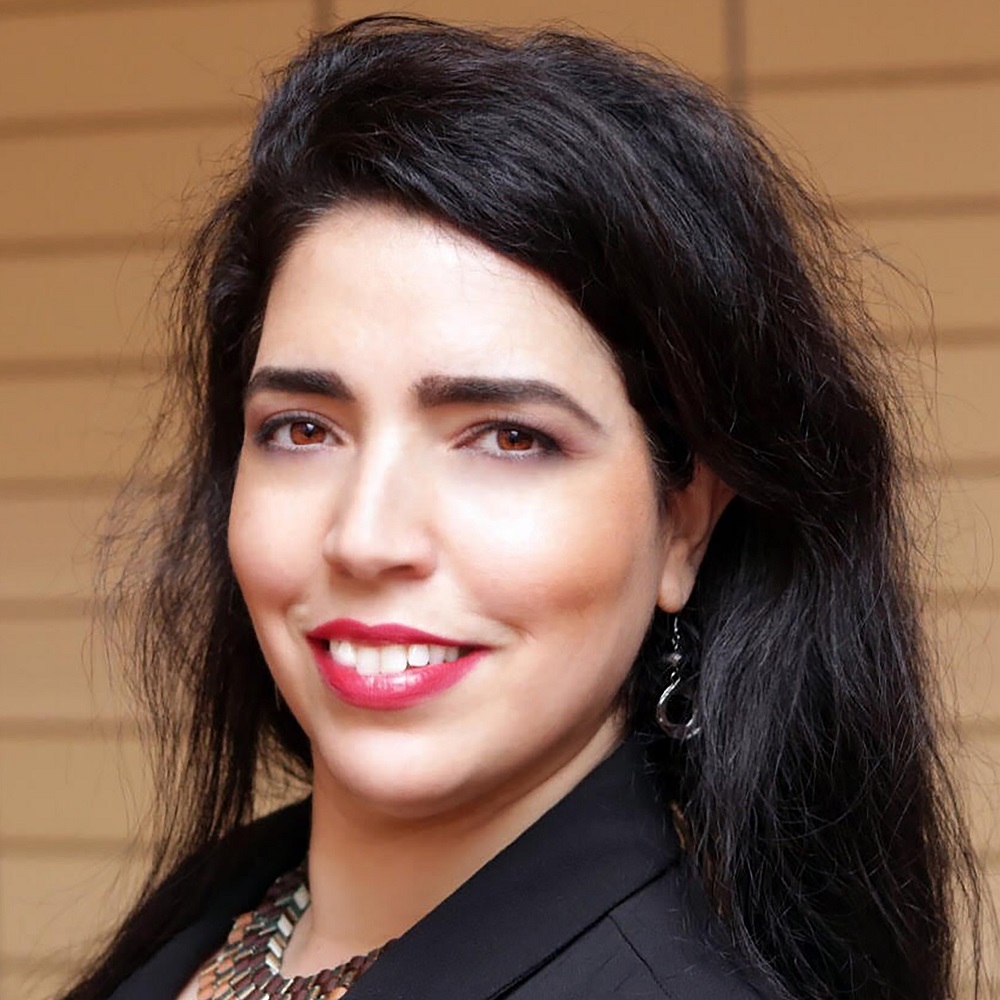 “With support from the Cottrell Scholar Award, my lab will develop a chemical framework for the bottom-up assembly of supramolecular systems with lifelike behaviors. We aim to converge the power of peptide and DNA nanotechnology to create new materials that mimic cellular and tissue functionality, and to drive innovation in biomedicine, nanotechnology, and advanced materials. On the educational frontier, I am planning to develop a convergent educational framework to better interconnect common chemical and physical concepts taught in undergraduate chemistry, physics, and materials programs, while simultaneously equipping learners with the understanding of how these concepts impact and propel global societal and environmental challenges.”
“With support from the Cottrell Scholar Award, my lab will develop a chemical framework for the bottom-up assembly of supramolecular systems with lifelike behaviors. We aim to converge the power of peptide and DNA nanotechnology to create new materials that mimic cellular and tissue functionality, and to drive innovation in biomedicine, nanotechnology, and advanced materials. On the educational frontier, I am planning to develop a convergent educational framework to better interconnect common chemical and physical concepts taught in undergraduate chemistry, physics, and materials programs, while simultaneously equipping learners with the understanding of how these concepts impact and propel global societal and environmental challenges.”
Graham Giovanetti, physics, Williams College – A Study of Single Electron Backgrounds in a Low-Threshold Argon Detector
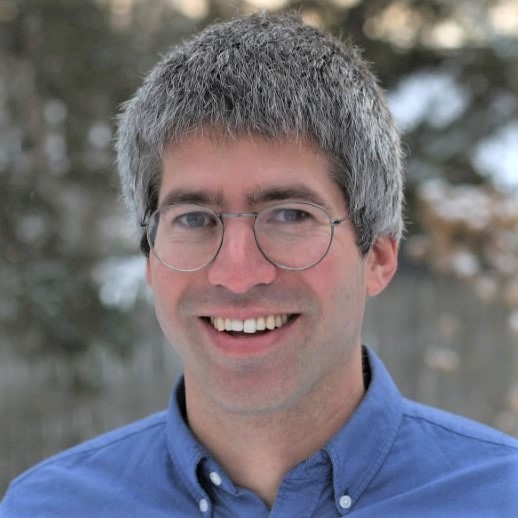 “The development of large-mass, low-threshold detectors for dark matter and neutrino experiments is an active area of research within the particle physics community. We will investigate techniques for lowering the energy threshold and reducing the background event rate in liquid argon detectors, with the goal of applying these improvements to future experiments. I will also develop a new pathway into the physics major at Williams College that will better support prospective majors whose high school experience leaves them underprepared for our traditional introductory course.”
“The development of large-mass, low-threshold detectors for dark matter and neutrino experiments is an active area of research within the particle physics community. We will investigate techniques for lowering the energy threshold and reducing the background event rate in liquid argon detectors, with the goal of applying these improvements to future experiments. I will also develop a new pathway into the physics major at Williams College that will better support prospective majors whose high school experience leaves them underprepared for our traditional introductory course.”
Vera Gluscevic, astronomy, University of Southern California – Discovering Dark Matter with Cosmology
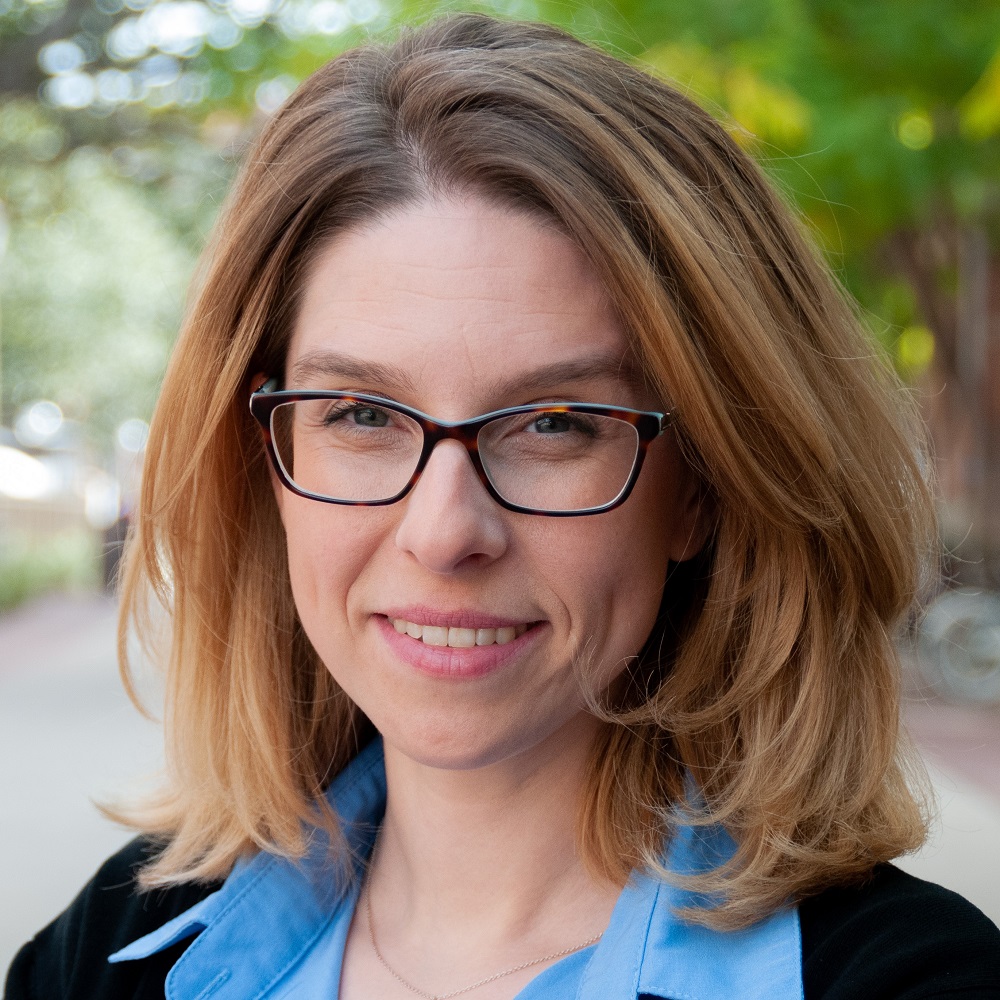 “Dark matter creates gravitational scaffolding that holds the visible universe together, yet it cannot be explained by any known particles or forces—its presence signals the existence of new fundamental physics. I use observations of the macroscopic universe to understand the microcosm of particles that govern it. With the imminent advent of the next-generation observational surveys, now is a critical time to deploy a framework that can assemble all the empirical evidence, tease out signals from dark matter from cosmological observations, and begin to characterize dark matter particle properties: their masses, spins, and interactions. My group will develop key components of this framework, including tools for fast modeling of the local universe in cosmologies where dark matter behaves in novel ways, to ultimately enable comprehensive probabilistic inference of dark matter microphysics from measurements of the satellite-galaxy populations, large scale structure, and the cosmic microwave background lensing anisotropy. My educational proposal focuses on creation of an interactive Physics Discovery Practicum that supplements a seminar series with hands-on coding and data-analysis tutorials in a studio classroom setting. The Practicum aims to increase data fluency in starting physics and astronomy majors using data examples from the local physics research groups, equip students with computational tools for research early on in their careers, and boost their sense of belonging and community through in-class belonging interventions. The expected outcomes include increased student retention in physics and astronomy with a boost in representation of women and minoritized groups, and increased student self-efficacy and academic success later on.”
“Dark matter creates gravitational scaffolding that holds the visible universe together, yet it cannot be explained by any known particles or forces—its presence signals the existence of new fundamental physics. I use observations of the macroscopic universe to understand the microcosm of particles that govern it. With the imminent advent of the next-generation observational surveys, now is a critical time to deploy a framework that can assemble all the empirical evidence, tease out signals from dark matter from cosmological observations, and begin to characterize dark matter particle properties: their masses, spins, and interactions. My group will develop key components of this framework, including tools for fast modeling of the local universe in cosmologies where dark matter behaves in novel ways, to ultimately enable comprehensive probabilistic inference of dark matter microphysics from measurements of the satellite-galaxy populations, large scale structure, and the cosmic microwave background lensing anisotropy. My educational proposal focuses on creation of an interactive Physics Discovery Practicum that supplements a seminar series with hands-on coding and data-analysis tutorials in a studio classroom setting. The Practicum aims to increase data fluency in starting physics and astronomy majors using data examples from the local physics research groups, equip students with computational tools for research early on in their careers, and boost their sense of belonging and community through in-class belonging interventions. The expected outcomes include increased student retention in physics and astronomy with a boost in representation of women and minoritized groups, and increased student self-efficacy and academic success later on.”
Ling Hao, chemistry, George Washington University – Capturing Molecular Communications Using Mass Spectrometry and Enhancing Science Communication in Chemistry Education
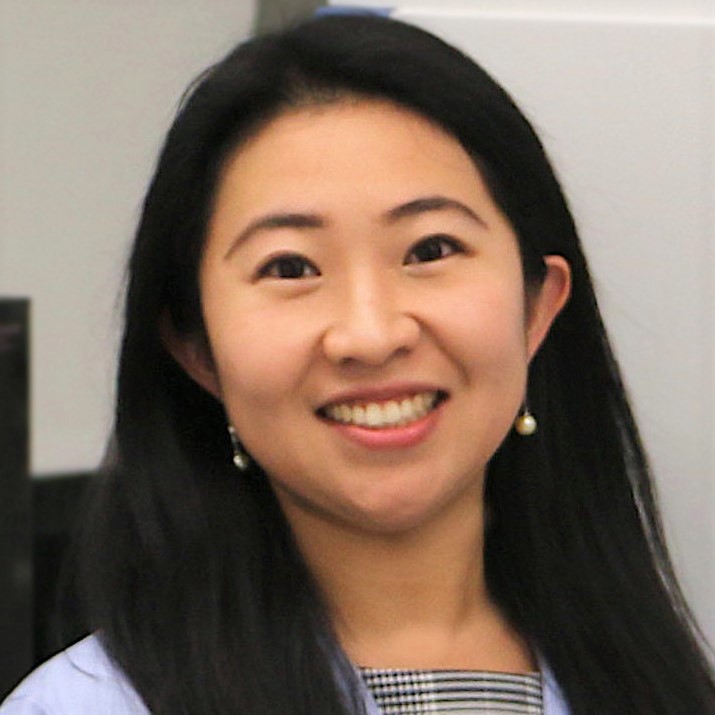 “Molecular interaction and communication are fundamental aspects of chemistry and life processes. Proteins, peptides, amino acids, and various biomolecules frequently communicate with each other to form stable interactions in molecular complexes or transient interactions for signal transduction and molecular trafficking. Despite the advances in understanding diverse functions and stable interactions of numerous proteins, capturing communications among different types of biomolecules is still technically challenging. Mass spectrometry is a powerful analytical chemistry technique that can be used to identify and quantify almost all biomolecules in nature. With the support of this award, my research group aims to design novel mass spectrometry-based strategies to decipher both stable and transient molecular interactions in living cells. We will develop high-throughput and quantitative analytical chemistry methods to capture protein-protein, protein-peptide, and protein-amino acid interactions. As important as molecular communications, scientists also need to become more skilled in science communication to fight against science misinformation, increase public awareness, influence public decision-making, and support personal career development. My education plan aims to develop a new science communication course in the chemistry department to equip the future generation of scientists with more effective and impactful science communication skills and enhance both undergraduate and graduate student experience in research training and professional development.”
“Molecular interaction and communication are fundamental aspects of chemistry and life processes. Proteins, peptides, amino acids, and various biomolecules frequently communicate with each other to form stable interactions in molecular complexes or transient interactions for signal transduction and molecular trafficking. Despite the advances in understanding diverse functions and stable interactions of numerous proteins, capturing communications among different types of biomolecules is still technically challenging. Mass spectrometry is a powerful analytical chemistry technique that can be used to identify and quantify almost all biomolecules in nature. With the support of this award, my research group aims to design novel mass spectrometry-based strategies to decipher both stable and transient molecular interactions in living cells. We will develop high-throughput and quantitative analytical chemistry methods to capture protein-protein, protein-peptide, and protein-amino acid interactions. As important as molecular communications, scientists also need to become more skilled in science communication to fight against science misinformation, increase public awareness, influence public decision-making, and support personal career development. My education plan aims to develop a new science communication course in the chemistry department to equip the future generation of scientists with more effective and impactful science communication skills and enhance both undergraduate and graduate student experience in research training and professional development.”
Mark Herzik, chemistry, University of California, San Diego – Next-Generation Electron Microscopy – Visualizing Enzymes in Action and Development of Hands-on Curriculum
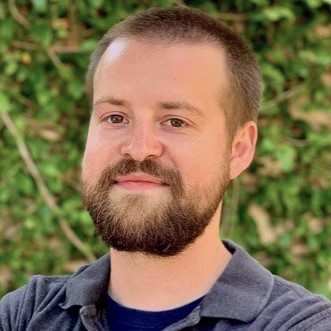 “Single-particle cryogenic electron microscopy (cryoEM) is a structural technique that can be used to visualize heterogeneous macromolecular complexes to high-resolution. Under this project, we will develop cryoEM data collection and processing strategies to directly observe the complex conformational landscapes of proteins as they undergo catalysis, allowing for the visualization of transient states that would be too labile using other structural techniques. This research program is coupled to educational activities that will implement self-paced modular hands-on curricula focusing on cryoEM data analysis and manipulation. This includes the use of a precalculated data processing simulator hosted on a cloud desktop environment, whereby students will be allowed to “process” a cryoEM dataset from raw movies to final ~2.4 Å structure within a classroom setting with near instantaneous feedback on their decision paths. Additionally, I will implement hands-on learning using Jupyter lab notebooks that will allow students to engage and manipulate cryoEM data.”
“Single-particle cryogenic electron microscopy (cryoEM) is a structural technique that can be used to visualize heterogeneous macromolecular complexes to high-resolution. Under this project, we will develop cryoEM data collection and processing strategies to directly observe the complex conformational landscapes of proteins as they undergo catalysis, allowing for the visualization of transient states that would be too labile using other structural techniques. This research program is coupled to educational activities that will implement self-paced modular hands-on curricula focusing on cryoEM data analysis and manipulation. This includes the use of a precalculated data processing simulator hosted on a cloud desktop environment, whereby students will be allowed to “process” a cryoEM dataset from raw movies to final ~2.4 Å structure within a classroom setting with near instantaneous feedback on their decision paths. Additionally, I will implement hands-on learning using Jupyter lab notebooks that will allow students to engage and manipulate cryoEM data.”
Mark Ilton, physics, Harvey Mudd College – The Physical Principles Governing High-Rate and Large Deformation Elastic Recoil
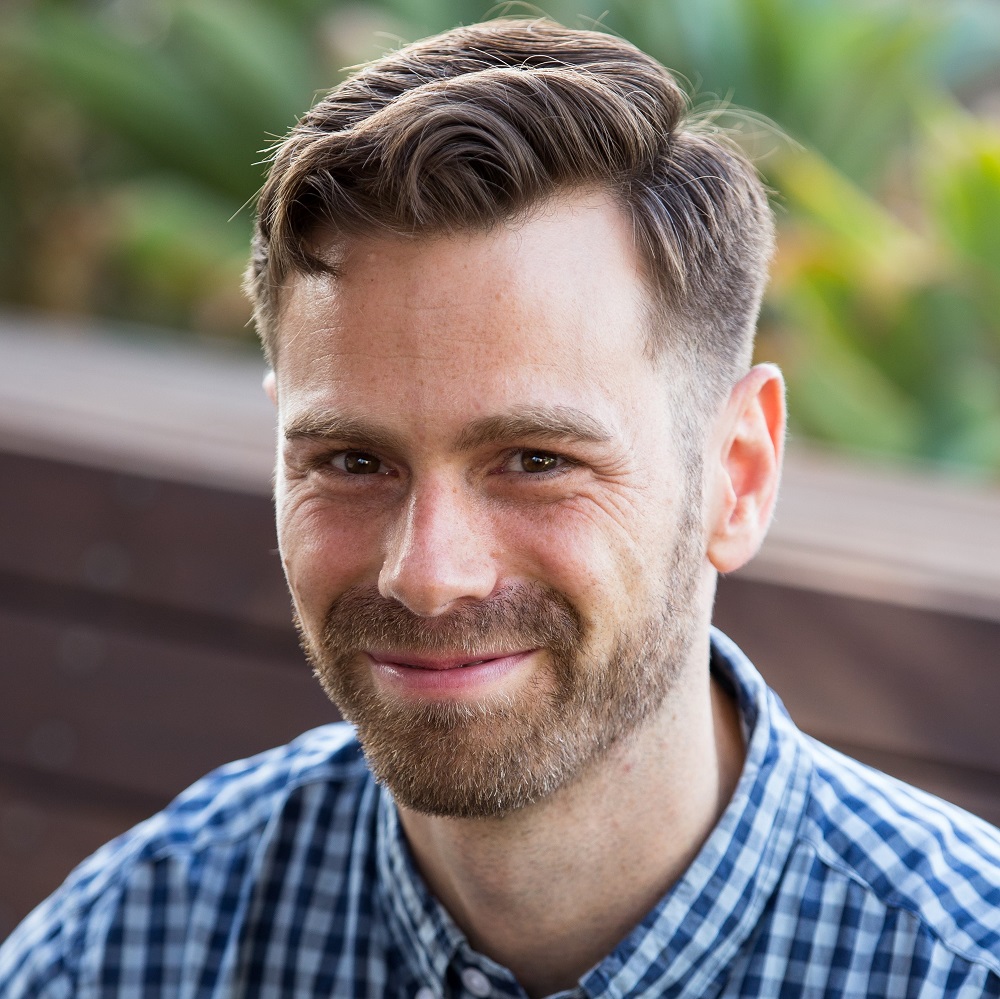 "With this award, I plan to study the physics behind how some animals use elasticity to move quickly. My approach combines experiments and simulations to better understand when viscoelasticity plays a role in this movement. I also plan to use materials with adjustable elastic and viscoelastic properties to understand the polymer physics principles that control these movements. This research may lead to a better understanding of efficient elastic actuators and their design principles. For the educational component of the award, I aim to improve access to undergraduate research opportunities, particularly for students from underrepresented groups in STEM, by redesigning a physics lab course at Harvey Mudd College to include hands-on experiments that focus on developing experimental skills and cover active areas of physics research. The modular design of the course will make it easier for future instructors to update the content while improving learning outcomes and promoting the physics identity of diverse students.”
"With this award, I plan to study the physics behind how some animals use elasticity to move quickly. My approach combines experiments and simulations to better understand when viscoelasticity plays a role in this movement. I also plan to use materials with adjustable elastic and viscoelastic properties to understand the polymer physics principles that control these movements. This research may lead to a better understanding of efficient elastic actuators and their design principles. For the educational component of the award, I aim to improve access to undergraduate research opportunities, particularly for students from underrepresented groups in STEM, by redesigning a physics lab course at Harvey Mudd College to include hands-on experiments that focus on developing experimental skills and cover active areas of physics research. The modular design of the course will make it easier for future instructors to update the content while improving learning outcomes and promoting the physics identity of diverse students.”
Sarah King, chemistry, University of Chicago – Directing Energy and Charge Transfer in Molecular Moiré Materials
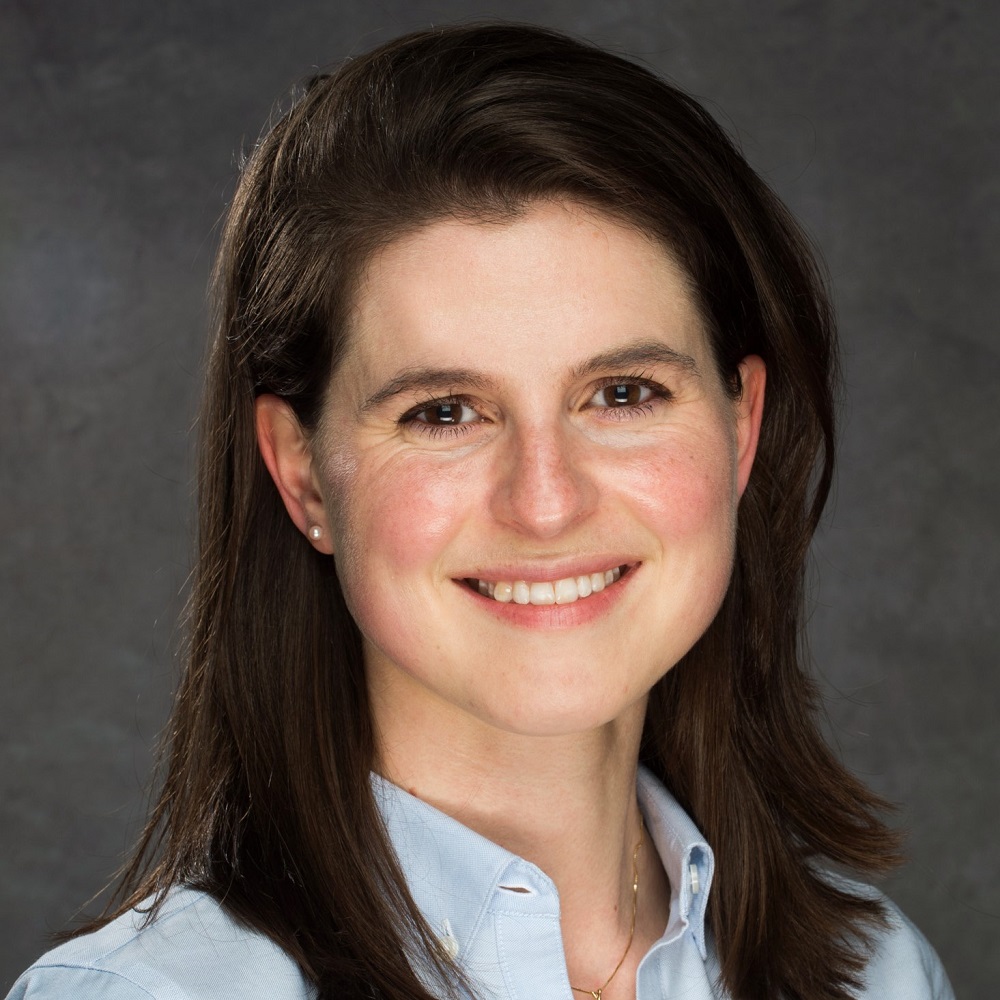 “My scientific research aims to realize the promise of strongly correlated material properties and electronic states that are needed for future energy efficient electronic devices or quantum information using the chemical tunability of molecular layered materials. Using advanced spectroscopy and microscopy techniques, able to investigate the smallest details of materials on the fastest timescales, we will discover when and why molecular layered materials can display strongly correlated electronic states and how we can tune their properties. My educational plan seeks to make science communication continuously part of the chemistry curriculum through the incorporation of active learning science communication modules into standard chemistry coursework. This approach is anticipated to improve acquisition and retention of science communication skills compared to conventional dedicated science communication classes. By utilizing an active learning approach to science communication within existing coursework, the educational plan also seeks to increase self-efficacy and retention of undergraduate students in chemistry, critical for increasing the participation of underrepresented students in the sciences.”
“My scientific research aims to realize the promise of strongly correlated material properties and electronic states that are needed for future energy efficient electronic devices or quantum information using the chemical tunability of molecular layered materials. Using advanced spectroscopy and microscopy techniques, able to investigate the smallest details of materials on the fastest timescales, we will discover when and why molecular layered materials can display strongly correlated electronic states and how we can tune their properties. My educational plan seeks to make science communication continuously part of the chemistry curriculum through the incorporation of active learning science communication modules into standard chemistry coursework. This approach is anticipated to improve acquisition and retention of science communication skills compared to conventional dedicated science communication classes. By utilizing an active learning approach to science communication within existing coursework, the educational plan also seeks to increase self-efficacy and retention of undergraduate students in chemistry, critical for increasing the participation of underrepresented students in the sciences.”
Lydia Kisley, physics, Case Western Reserve University – Imaging the Physical Dynamics of Analytes in Commercial Separation Materials and Using Core Facilities in the Classroom
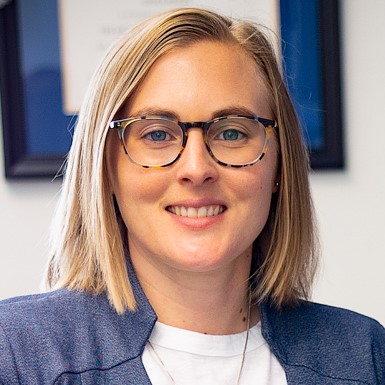 “Separation science focuses on the isolation and detection of valuable components from complex mixtures. Separations are involved in important industrial processes ranging from developing and producing new drugs, extracting rare metals and elements for green technologies, and water purification. Currently, there is enormous waste that occurs in the trial-and-error optimization of separations from the top-down. Our research instead studies separations from the bottom-up — one molecule at a time — using powerful light microscopes to identify rare events that lead to the failure of challenging purification methods that are hidden in conventional experiments. Here, we are expanding the single-molecule separations field to more complex conditions and are investigating separations that have yet to be studied at this scale. In education, I will incorporate core facility instrumentation in two physics classes (biophysics and electronics) to expand the methods students learn about and can access. While laboratory courses lay the foundation for student understanding of experimental science, students are limited to methods that are conducive to a classroom environment and miss learning about advanced instrumental techniques that are used in interdisciplinary and emerging research areas. I will extend the classroom efforts beyond Case Western Reserve University with remote engagement of similar classes at primarily undergraduate institutions. Overall, core facilities in the classroom will improve students' knowledge of instrumentation that they may otherwise be unaware of, better preparing students for future research and careers.”
“Separation science focuses on the isolation and detection of valuable components from complex mixtures. Separations are involved in important industrial processes ranging from developing and producing new drugs, extracting rare metals and elements for green technologies, and water purification. Currently, there is enormous waste that occurs in the trial-and-error optimization of separations from the top-down. Our research instead studies separations from the bottom-up — one molecule at a time — using powerful light microscopes to identify rare events that lead to the failure of challenging purification methods that are hidden in conventional experiments. Here, we are expanding the single-molecule separations field to more complex conditions and are investigating separations that have yet to be studied at this scale. In education, I will incorporate core facility instrumentation in two physics classes (biophysics and electronics) to expand the methods students learn about and can access. While laboratory courses lay the foundation for student understanding of experimental science, students are limited to methods that are conducive to a classroom environment and miss learning about advanced instrumental techniques that are used in interdisciplinary and emerging research areas. I will extend the classroom efforts beyond Case Western Reserve University with remote engagement of similar classes at primarily undergraduate institutions. Overall, core facilities in the classroom will improve students' knowledge of instrumentation that they may otherwise be unaware of, better preparing students for future research and careers.”
David Leitch, chemistry, University of Victoria – Building Universal Quantitative Models for Catalysis from the Bottom Up, and Building Connections in Undergraduate Organic Chemistry Education
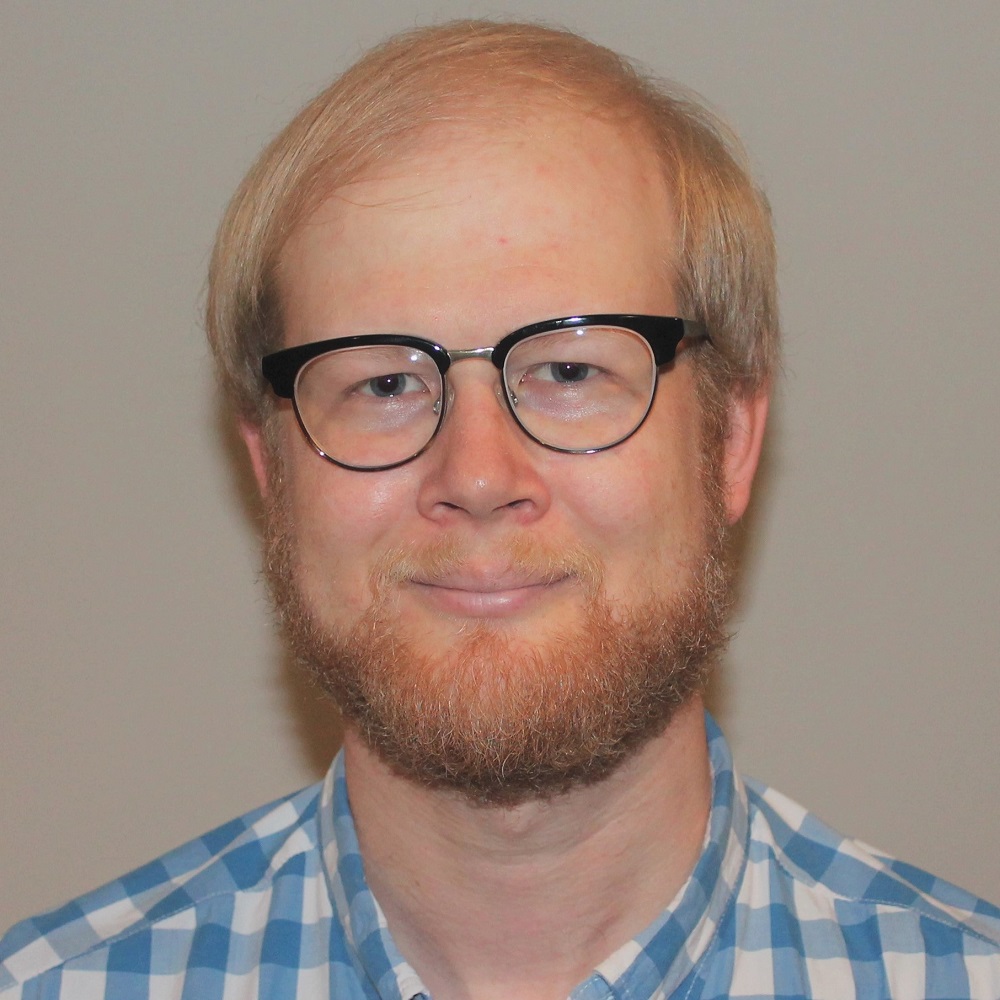
Allegra Liberman-Martin, chemistry, Chapman University – Broadening Applications of the Weakly Coordinating Triflimidate Anion in Main Group Catalysis
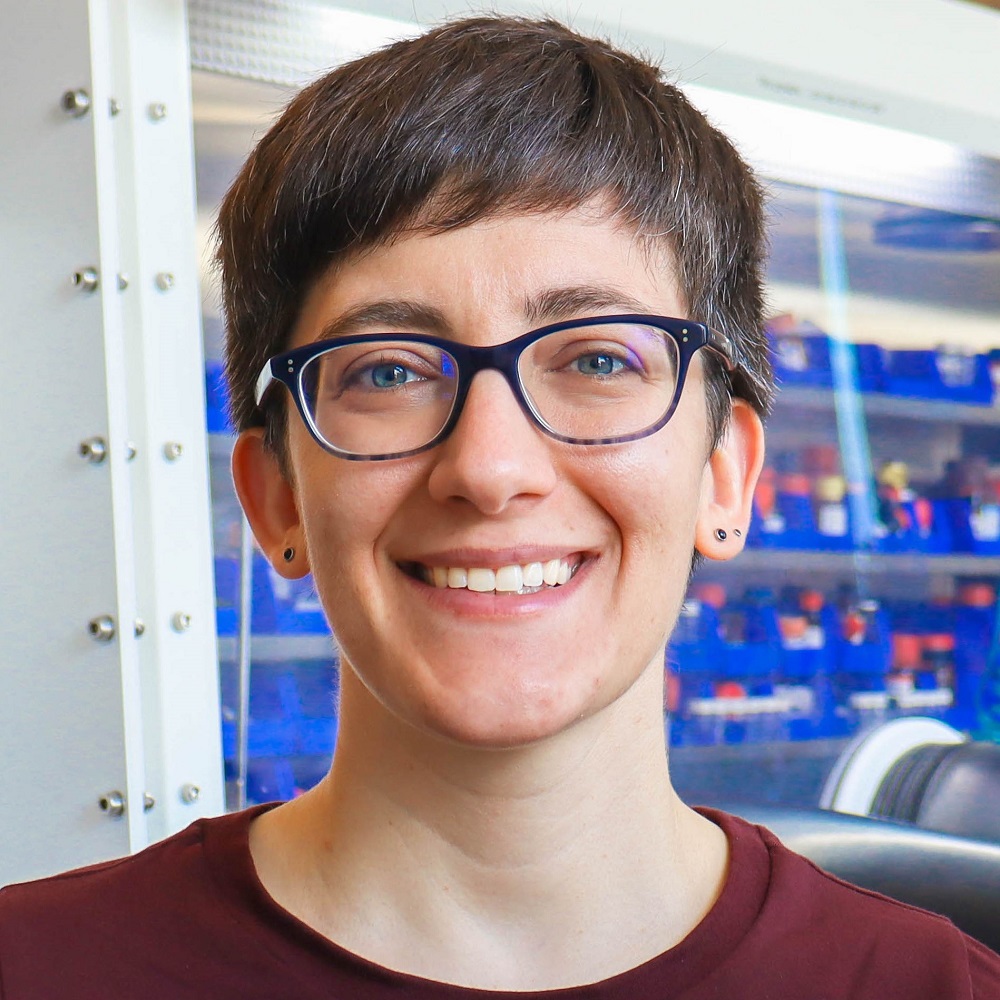 “There is an ongoing need for efficient catalysts based on earth-abundant elements as replacements for precious metal catalysts. Within sustainable catalysis, Lewis acids are a powerful category of catalysts that deplete electron density from substrates to enhance reactivity. Charge significantly influences Lewis acid strength, and cationic Lewis acid catalysts are often more reactive than neutral variants. In the proposed work, undergraduates in the Liberman-Martin Group will study cationic Lewis acids supported by triflimidate, a weakly-coordinating anion. Research projects will provide insight into the role of Lewis acid element identity, compound geometry, and anion structure on catalytic activity. The education project infuses scaffolded training in argumentation across the organic chemistry curriculum. Argumentation involves supporting claims with convincing evidence, and although scientific argumentation has cognitive and social benefits for students, practices to support students’ construction of arguments are not widely implemented. The emphasis on scientific argumentation is designed to help students develop critical thinking skills and engage in scientific practices.’’
“There is an ongoing need for efficient catalysts based on earth-abundant elements as replacements for precious metal catalysts. Within sustainable catalysis, Lewis acids are a powerful category of catalysts that deplete electron density from substrates to enhance reactivity. Charge significantly influences Lewis acid strength, and cationic Lewis acid catalysts are often more reactive than neutral variants. In the proposed work, undergraduates in the Liberman-Martin Group will study cationic Lewis acids supported by triflimidate, a weakly-coordinating anion. Research projects will provide insight into the role of Lewis acid element identity, compound geometry, and anion structure on catalytic activity. The education project infuses scaffolded training in argumentation across the organic chemistry curriculum. Argumentation involves supporting claims with convincing evidence, and although scientific argumentation has cognitive and social benefits for students, practices to support students’ construction of arguments are not widely implemented. The emphasis on scientific argumentation is designed to help students develop critical thinking skills and engage in scientific practices.’’
Kristen McQuinn, astronomy, Rutgers University – The Smallest Galaxies Hold the Biggest Clues for Understanding Galaxy Formation and Cosmology
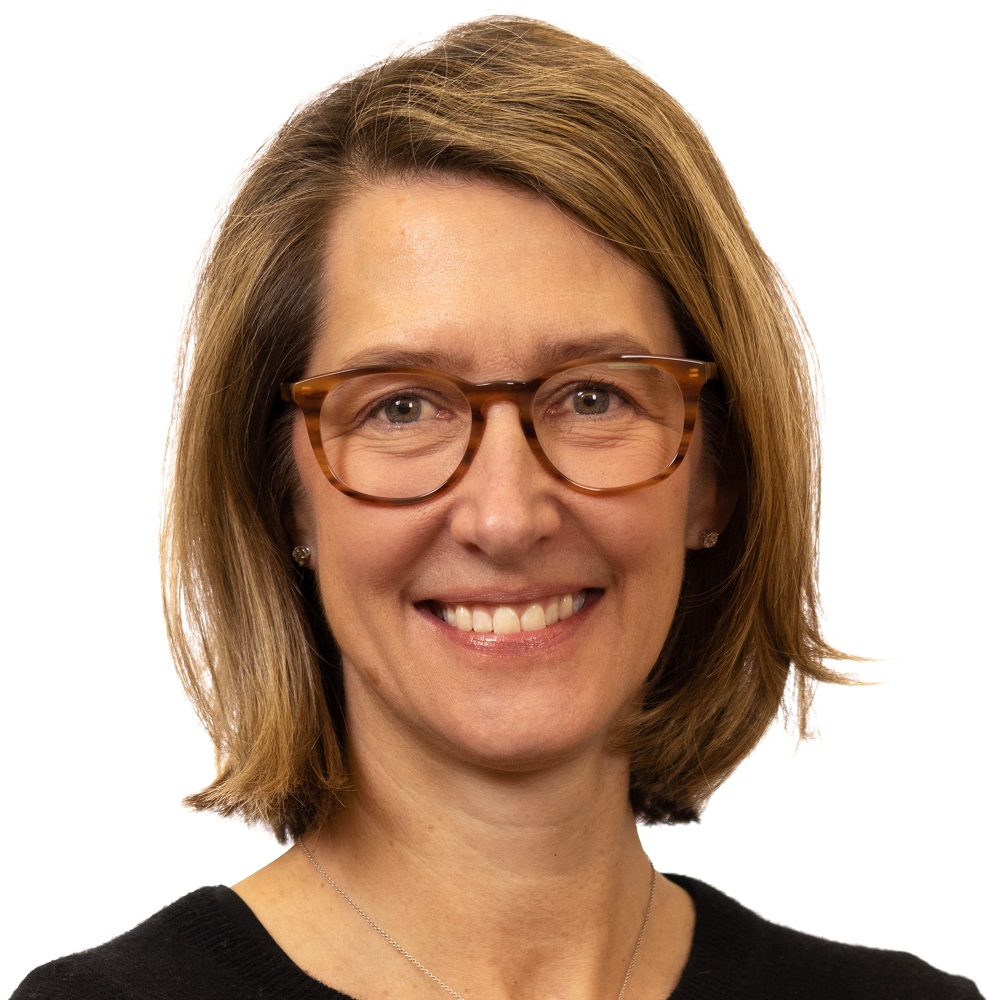 “My work as a Cottrell Scholar is focused on the discovery and study of tiny galaxies that are more than a million times less massive than our own Milky Way. These small systems are the building blocks of structure in the universe and can inform on how galaxies form at early epochs of time and what factors drive galaxy development and evolution. My education plan focuses on the retention of underrepresented minority students in STEM by engaging them in research during their first semester at college and connecting them with a multi-tiered mentoring network.”
“My work as a Cottrell Scholar is focused on the discovery and study of tiny galaxies that are more than a million times less massive than our own Milky Way. These small systems are the building blocks of structure in the universe and can inform on how galaxies form at early epochs of time and what factors drive galaxy development and evolution. My education plan focuses on the retention of underrepresented minority students in STEM by engaging them in research during their first semester at college and connecting them with a multi-tiered mentoring network.”
Alison Patteson, physics, Syracuse University – Soft Matter Physics of Biofilm Growth: A New Role of Substrate Viscoelasticity in Biofilm Growth
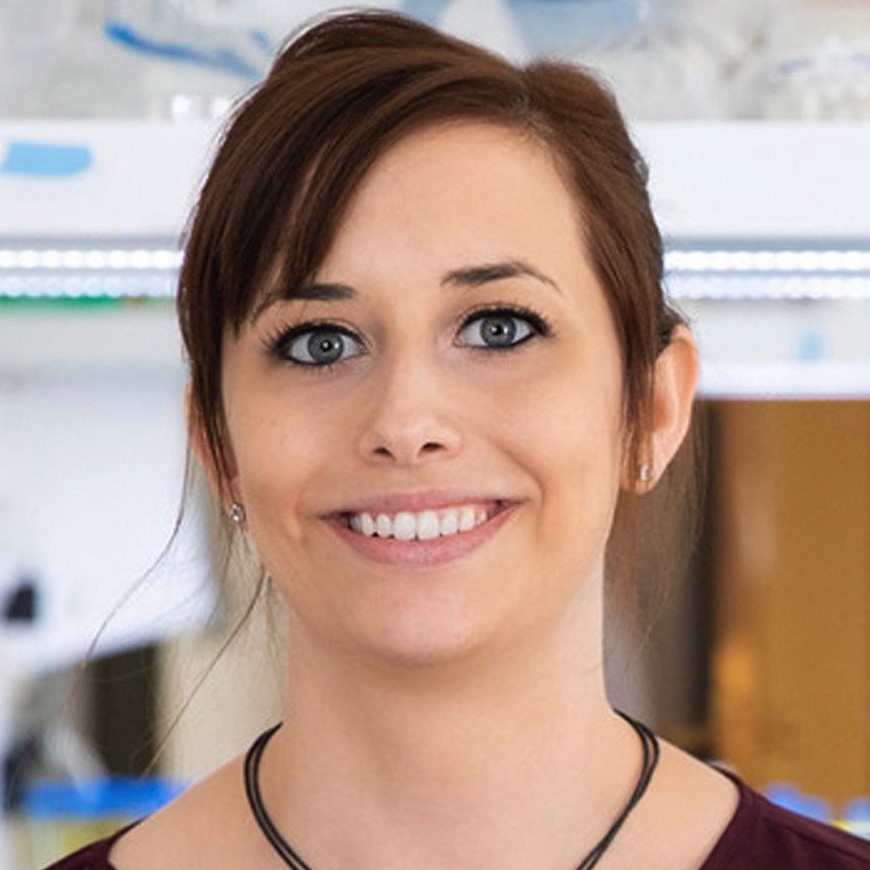 “Biofilms have great importance for infectious diseases, industrial biofouling, and environmental ecosystems. Central to the growth of biofilms is their ability to attach to and remodel their environment. These environments include soft soils and tissues that exhibit complex viscoelastic properties. Viscoelastic materials behave in part like a fluid and in part like a solid. This makes it challenging to understand how bacteria adapt to mechanical environmental features. Our recent work has developed a new set of quantitative tools to measure forces generated by growing biofilms and how external mechanical features impact biofilm growth. Combining experiments and computational modeling, this project aims to develop a unifying framework that describes the mechanical effects of substrates – and in particular substrate viscoelasticity – on biofilm growth, which could potentially identify new design rules for materials to promote or hinder biofilm growth. My education plan aims to recruit and train students from underrepresented groups in STEM. We will develop a new Public Engagement in Physics and STEM course and bring local Syracuse high school students in for a physics open house.”
“Biofilms have great importance for infectious diseases, industrial biofouling, and environmental ecosystems. Central to the growth of biofilms is their ability to attach to and remodel their environment. These environments include soft soils and tissues that exhibit complex viscoelastic properties. Viscoelastic materials behave in part like a fluid and in part like a solid. This makes it challenging to understand how bacteria adapt to mechanical environmental features. Our recent work has developed a new set of quantitative tools to measure forces generated by growing biofilms and how external mechanical features impact biofilm growth. Combining experiments and computational modeling, this project aims to develop a unifying framework that describes the mechanical effects of substrates – and in particular substrate viscoelasticity – on biofilm growth, which could potentially identify new design rules for materials to promote or hinder biofilm growth. My education plan aims to recruit and train students from underrepresented groups in STEM. We will develop a new Public Engagement in Physics and STEM course and bring local Syracuse high school students in for a physics open house.”
William Pfalzgraff, chemistry, Chatham University – Enhancing Reactivity and Selectivity at Polarized Interfaces
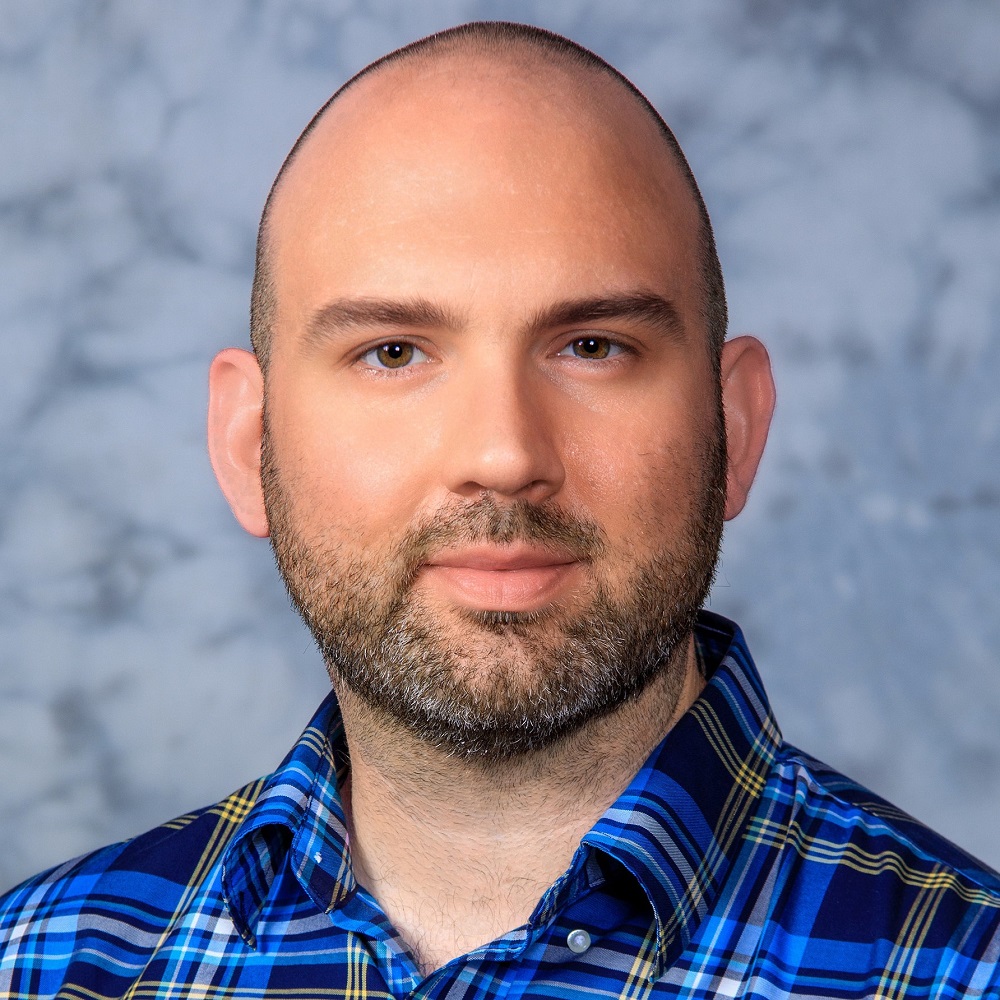 “My research will develop new approaches to optimize chemical reactions by providing a theoretical framework that explains how one can use local electric fields to precisely control the products produced in a reaction. Recent experimental work has shown that local electric fields, created by the proximity of ions at polarized interfaces, can give rise to selectivity and rate enhancements of up to two orders of magnitude. Our work will use theory and simulation to elucidate recently developed experimental setups for performing reactions at polarized interfaces. By combining electronic structure with molecular dynamics, we will model how different experimental factors, such as solvent, ions, and transition states, contribute to this effect, and thus develop design principles for optimizing experiments that exploit local electric fields. Our work integrates closely with experiment, allowing for insights gained from our simulations to be efficiently implemented and tested to develop this evolving area of synthesis. I will also leverage my expertise in modeling complex systems in my educational proposal, which is for the creation of a new course where second-year students create and interpret global climate models, including learning the necessary programming skills from the ground up. We have found in a pilot version of the proposed course that students can code their own climate model in Python, and then analyze, interpret, and present their results, allowing them to obtain a hands-on, quantitative understanding of climate change. Support from this award will allow me to develop the course, assess improvements in students' knowledge of geoscience and climate change, and disseminate the materials widely.”
“My research will develop new approaches to optimize chemical reactions by providing a theoretical framework that explains how one can use local electric fields to precisely control the products produced in a reaction. Recent experimental work has shown that local electric fields, created by the proximity of ions at polarized interfaces, can give rise to selectivity and rate enhancements of up to two orders of magnitude. Our work will use theory and simulation to elucidate recently developed experimental setups for performing reactions at polarized interfaces. By combining electronic structure with molecular dynamics, we will model how different experimental factors, such as solvent, ions, and transition states, contribute to this effect, and thus develop design principles for optimizing experiments that exploit local electric fields. Our work integrates closely with experiment, allowing for insights gained from our simulations to be efficiently implemented and tested to develop this evolving area of synthesis. I will also leverage my expertise in modeling complex systems in my educational proposal, which is for the creation of a new course where second-year students create and interpret global climate models, including learning the necessary programming skills from the ground up. We have found in a pilot version of the proposed course that students can code their own climate model in Python, and then analyze, interpret, and present their results, allowing them to obtain a hands-on, quantitative understanding of climate change. Support from this award will allow me to develop the course, assess improvements in students' knowledge of geoscience and climate change, and disseminate the materials widely.”
Chanda Prescod-Weinstein, physics, University of New Hampshire – Searching for a Vibrant Dark Sector
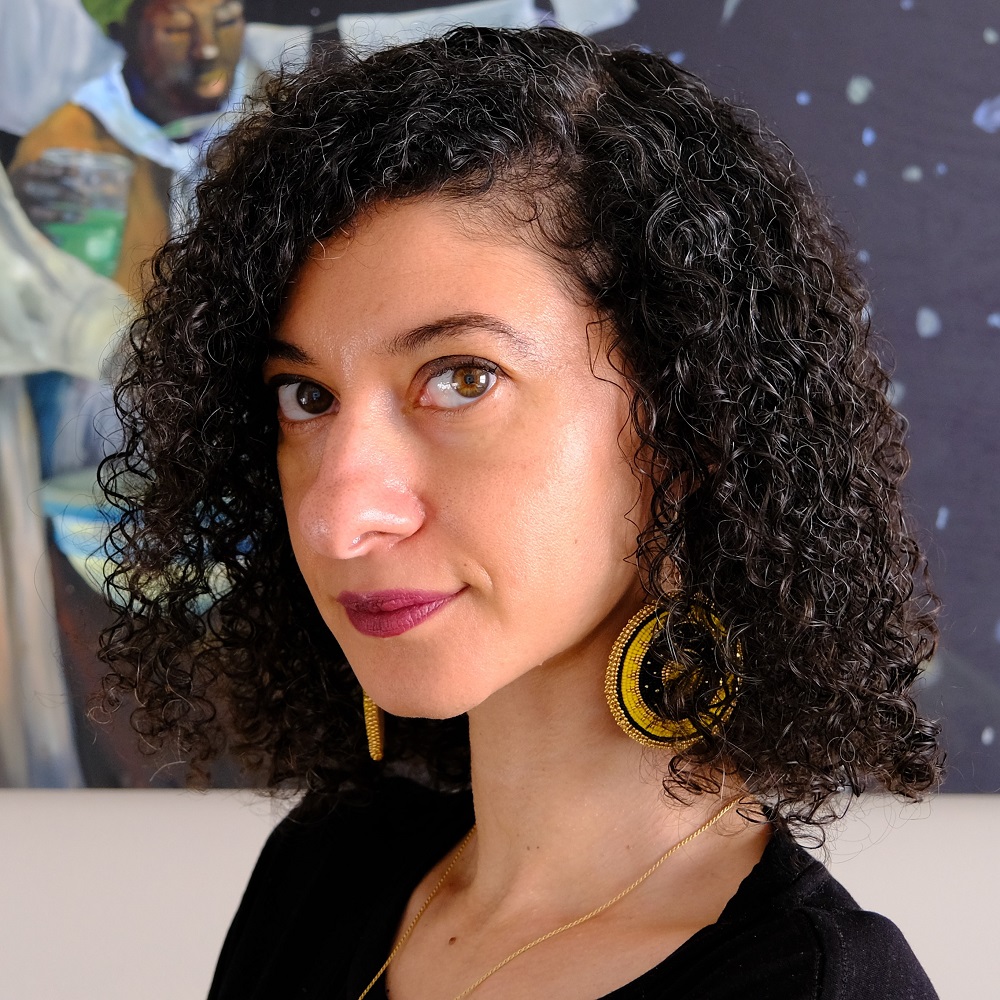
Noel Richardson, astronomy, Embry-Riddle Aeronautical University – Massive Binaries Have an Important Impact on Both Their Environments and on Undergraduate Education
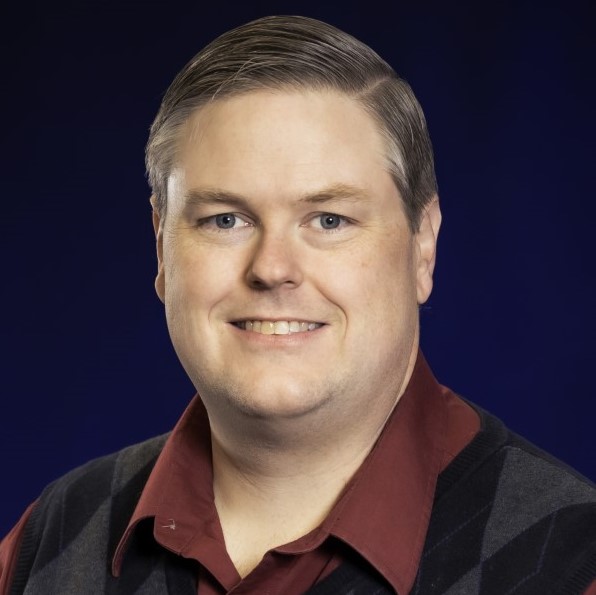 “Massive stars usually form in binary star systems, which provide the only means to determine their masses and constrain their evolution. After leaving the main sequence, evolved massive stars exhibit strong winds, so measurements of stellar masses can only be easily probed through long baseline optical interferometry and high-resolution spectroscopy. I aim to constrain orbits of the evolved massive stars and then use the results to compare to evolution models that include binary interactions to understand their evolution. I will be teaching an observational astronomy class centered around eclipsing binary stars, allowing students to learn the basics of data reduction and analysis, along with an introduction to the Physics Of Eclipsing BinariEs (PHOEBE) software. With these techniques introduced early into the astronomy curriculum, I hope to make a more equitable and inclusive introduction to research for astronomy majors.”
“Massive stars usually form in binary star systems, which provide the only means to determine their masses and constrain their evolution. After leaving the main sequence, evolved massive stars exhibit strong winds, so measurements of stellar masses can only be easily probed through long baseline optical interferometry and high-resolution spectroscopy. I aim to constrain orbits of the evolved massive stars and then use the results to compare to evolution models that include binary interactions to understand their evolution. I will be teaching an observational astronomy class centered around eclipsing binary stars, allowing students to learn the basics of data reduction and analysis, along with an introduction to the Physics Of Eclipsing BinariEs (PHOEBE) software. With these techniques introduced early into the astronomy curriculum, I hope to make a more equitable and inclusive introduction to research for astronomy majors.”
Daniel Tabor, chemistry, Texas A&M University – Intelligent Optimization of Organic Photophysical Chemical Spaces
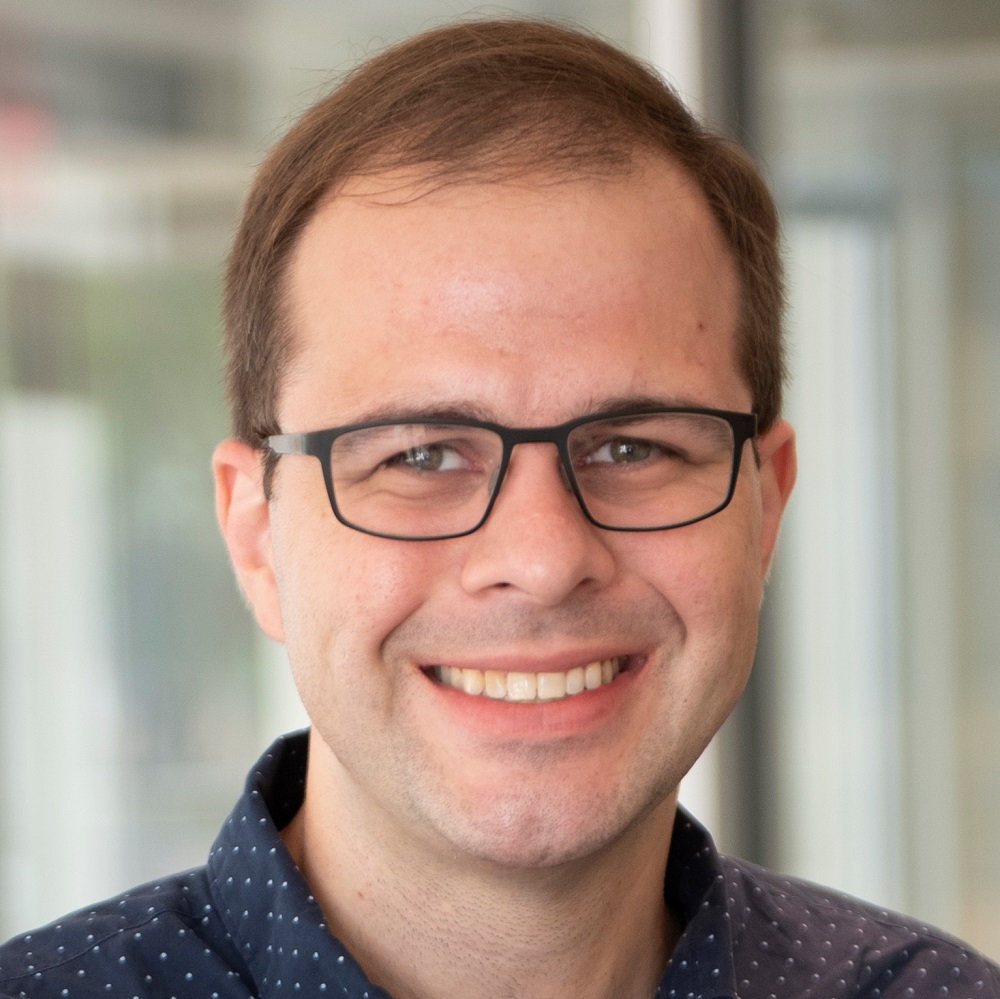 “Designing new molecules that interact with light in ‘just the right way’ is a challenging task. There are an enormous number of possible molecules that a chemist can make, but the right molecule for many problems is a ‘needle in the haystack’ of chemical space. Our research focuses on building theoretical and computational tools to search efficiently through these spaces. In order to speed up these searches, we integrate advances in machine learning and data science with the fundamental principles of chemistry to build smart and adaptive models. A major focus of our group is building interpretable models, where we can understand ‘why’ the computational methods predict that their lead candidates are what they are (and we can tweak them if we see fit!) In parallel to this work, we focus on training a workforce ready to integrate spectroscopy and fundamentals of data science into their future work, given the ubiquity of both tools in modern research and development. The data science education components will emphasize Findable, Accessible, Interoperable, and Reusable (FAIR) data principles. In addition, we will address concerns about data equity and biases that can exist in large datasets and their impacts in generating biased and overconfident models.”
“Designing new molecules that interact with light in ‘just the right way’ is a challenging task. There are an enormous number of possible molecules that a chemist can make, but the right molecule for many problems is a ‘needle in the haystack’ of chemical space. Our research focuses on building theoretical and computational tools to search efficiently through these spaces. In order to speed up these searches, we integrate advances in machine learning and data science with the fundamental principles of chemistry to build smart and adaptive models. A major focus of our group is building interpretable models, where we can understand ‘why’ the computational methods predict that their lead candidates are what they are (and we can tweak them if we see fit!) In parallel to this work, we focus on training a workforce ready to integrate spectroscopy and fundamentals of data science into their future work, given the ubiquity of both tools in modern research and development. The data science education components will emphasize Findable, Accessible, Interoperable, and Reusable (FAIR) data principles. In addition, we will address concerns about data equity and biases that can exist in large datasets and their impacts in generating biased and overconfident models.”
Julian West, chemistry, Rice University – Sustainable Difunctionalization of Alkenes Via Bio-Inspired Radical Ligand Transfer and Training Scientists to Engage with the Greater Public
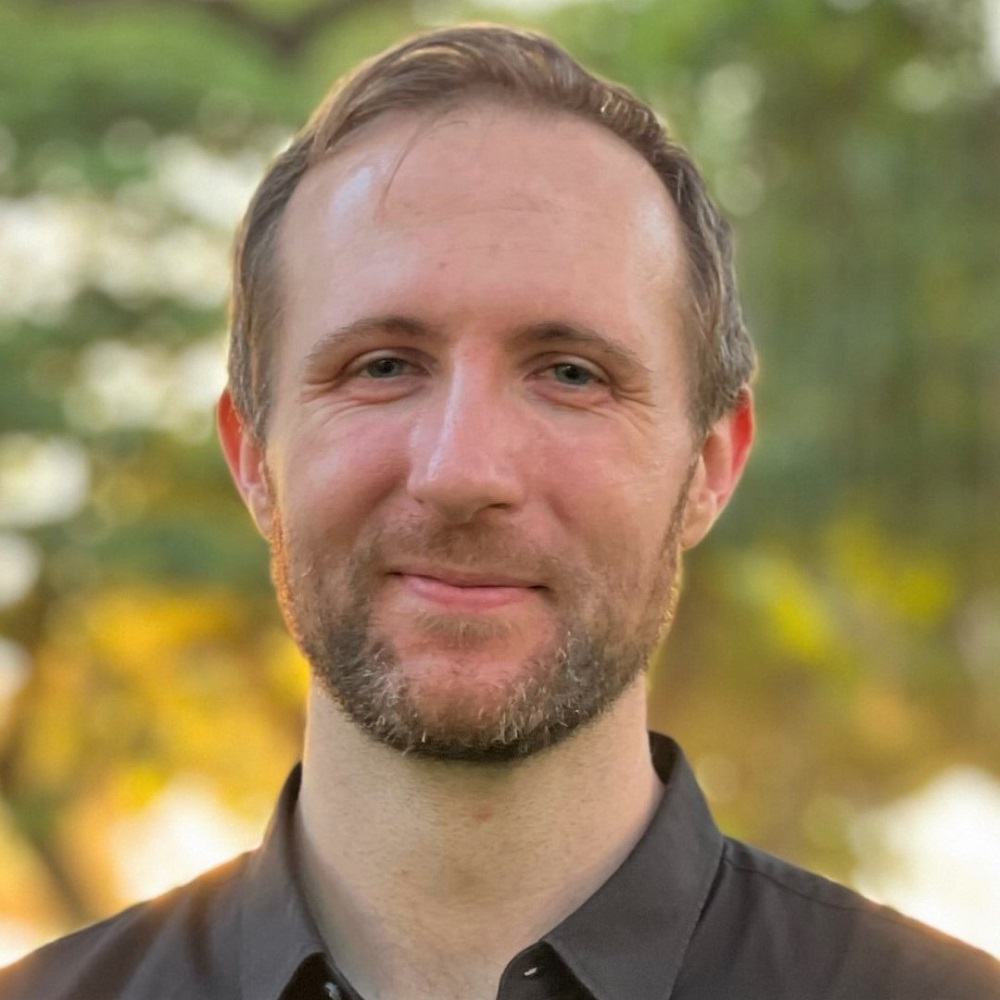 “Alkene difunctionalization is a powerful approach to synthesize the molecules of modern life, from pharmaceuticals to next-generation materials. However, current methods rely on rare and precious metals such as palladium and are prone to undesirable side reactions. Here we propose a new, radical, light-driven approach to alkene difunctionalization that uses simple, cheap, and sustainable salts of iron and takes inspiration from the ability of iron-containing enzymes to perform bio-inspired radical ligand transfer. This approach has already allowed us to develop a new alkene diazidation reaction, and we propose building on these results to develop a suite of powerful alkene difunctionalization reactions that will enable the synthesis of critical molecules across science and society. In a parallel aim, we recognize that the COVID- 19 pandemic has revealed that general understanding and trust of science are at a critically low level, leading to tragic and preventable outcomes. Here we propose developing a new workshop series that leverages my experience in newspaper and magazine writing to grow public science writing abilities and help train the next generation of science communicators to reengage the public and build trust in science.”
“Alkene difunctionalization is a powerful approach to synthesize the molecules of modern life, from pharmaceuticals to next-generation materials. However, current methods rely on rare and precious metals such as palladium and are prone to undesirable side reactions. Here we propose a new, radical, light-driven approach to alkene difunctionalization that uses simple, cheap, and sustainable salts of iron and takes inspiration from the ability of iron-containing enzymes to perform bio-inspired radical ligand transfer. This approach has already allowed us to develop a new alkene diazidation reaction, and we propose building on these results to develop a suite of powerful alkene difunctionalization reactions that will enable the synthesis of critical molecules across science and society. In a parallel aim, we recognize that the COVID- 19 pandemic has revealed that general understanding and trust of science are at a critically low level, leading to tragic and preventable outcomes. Here we propose developing a new workshop series that leverages my experience in newspaper and magazine writing to grow public science writing abilities and help train the next generation of science communicators to reengage the public and build trust in science.”
Christopher Whidbey, chemistry, Seattle University – Illuminating the Dark Proteome: ABPP for High-Throughput Experimental Characterization of Proteins
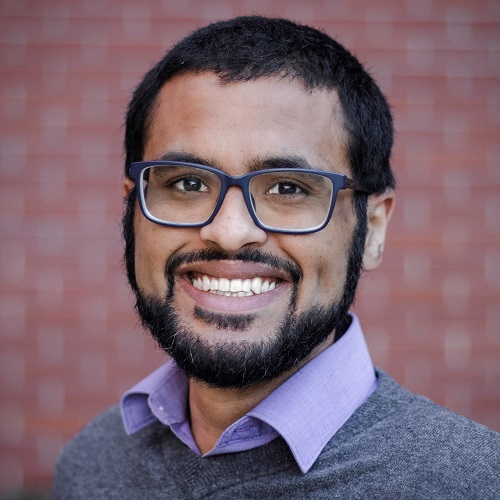 “I am proposing a new biochemical approach to rapidly characterize novel proteins. Recent technological advancements have enabled the discovery of millions of proteins made by organisms from every ecosystem on Earth. Unfortunately, current approaches to protein characterization are both slow and low-throughput, meaning the number of characterized proteins dramatically lags behind identified new sequences. This leaves us ‘in the dark’ about the function served by about a third of all proteins. There are indications that these uncharacterized proteins might perform critical roles. With new tools, we could help experimental characterization catch up to sequence discovery. This award will allow my research group to develop new chemical biology-based tools to rapidly characterize these ‘dark’ proteins using a multiplexed, high-throughput approach. This will allow these proteins to be considered as tools for basic science, healthcare, and environmental applications. Potential applications include bioremediation and, as we’re working toward in my lab, therapies to prevent and treat conditions like pre-term birth. These issues have high appeal for undergraduates, and I will use this award to provide these students with early-undergrad research opportunities in the form of a research course. This will be paired with the development of an interdisciplinary seminar series to bring in local, early career scientists to discuss their work and career paths, allowing students to network, have cross-disciplinary exposure, and develop a sense of belonging. Both efforts will draw on persistence research to intentionally promote the voices and retention of underrepresented minority groups in STEM.”
“I am proposing a new biochemical approach to rapidly characterize novel proteins. Recent technological advancements have enabled the discovery of millions of proteins made by organisms from every ecosystem on Earth. Unfortunately, current approaches to protein characterization are both slow and low-throughput, meaning the number of characterized proteins dramatically lags behind identified new sequences. This leaves us ‘in the dark’ about the function served by about a third of all proteins. There are indications that these uncharacterized proteins might perform critical roles. With new tools, we could help experimental characterization catch up to sequence discovery. This award will allow my research group to develop new chemical biology-based tools to rapidly characterize these ‘dark’ proteins using a multiplexed, high-throughput approach. This will allow these proteins to be considered as tools for basic science, healthcare, and environmental applications. Potential applications include bioremediation and, as we’re working toward in my lab, therapies to prevent and treat conditions like pre-term birth. These issues have high appeal for undergraduates, and I will use this award to provide these students with early-undergrad research opportunities in the form of a research course. This will be paired with the development of an interdisciplinary seminar series to bring in local, early career scientists to discuss their work and career paths, allowing students to network, have cross-disciplinary exposure, and develop a sense of belonging. Both efforts will draw on persistence research to intentionally promote the voices and retention of underrepresented minority groups in STEM.”
